|
4/25/2024
DEATH TO PLASTIC by John Cat.What does Death to Plastic mean as a statement? Keep this in mind. The world's first fully synthetic plastic was Bakelite invented in New York in 1907, by Leo Baekeland, who coined the term "plastics", which derives from the Greek word, plastikos, meaning "capable of being shaped or molded. The noun plasticity refers specifically here to the deformability of the materials used in the manufacture of plastics. As consumerism grew into the century, 9.2 billion tonnes of plastic are estimated to have been made between 1950 and 2017, more than half of which has been produced since 2004. In 2020, 400 million tonnes of plastic were produced. If global trends on plastic demand continue, it is estimated that by 2050 annual global plastic production will reach over 1.1 billion tonnes. That's a lot of plastic but where does it go? Of all the plastic discarded so far since plastic was invented over 100 years ago, some 14% has been incinerated and less than 10% has been recycled. Plastic is not technically recyclable anymore because it is no longer profitable to recycle. Most recycling facilities simply send plastic to landfills because they would go out of business trying to recycle it. The success and dominance of plastics starting in the early 20th century has caused widespread environmental problem, due to their slow decomposition rate in natural ecosystems. The qualities that make plastic so useful have also made it a detriment to the environment. Plastic production releases chemical pollutants that poison animals and plants, while plastic garbage piles up and takes unimaginable time spans to break down. The natural world has proven ill-equipped to handle plastics, and we have fallen short of containing their impact. --- Most plastic produced has not been reused, or is incapable of reuse, either being captured in landfills or persisting in the environment as plastic pollution or micro plastics. Humans breathe in micro plastics and they also eat it every day in food such as fish and pretty much everything else. Plastic pollution can be found in all the world’s major water bodies, for example, creating plastic garbage patches in all of the world's oceans and contaminating terrestrial ecosystems. -- Environmental economists now say it is actually better for the planet to simply throw your plastic in the trash so that it requires less trucking to get it to the landfill. But as a comparison to plastic, of all the aluminum produced since 1888, over 75% of it is still in current use Coke adds life?
We’ve all seen plastic trash littering beaches, parks, and roadsides. But have you ever wondered where all that plastic is actually coming from? Thanks to a massive global citizen science effort, researchers can now point the finger at some of the world’s biggest corporations most responsible for manufacturing this environmental scourge. In fact, the new report estimates that just five companies produce the items responsible for a quarter of the world’s plastic pollution. The single biggest corporate source of branded plastic pollution was the Coca-Cola Company, which accounted for a whopping 11 percent of all branded plastic waste recorded in the global survey. ------------------------ Today ( and yesterday) many artists all over work with a higher consciousness and activism via their arts. Artists like Anne-Katrin Spiess (b. 1968, Lugano, Switzerland) who creates site-specific installations and performances that often address ecological concerns. -------- The Death to Plastic artwork here was created by Art-To-Go artist Jimmy Sasso (b.1960 U.S.A.) to heighten awareness and help educate the public by making art that has impact and meanings which provoke beneficial community changes for all. Artwork on things such as Tee Shirts can help spread the message. The hand drawn artworks appear on 100% cotton Navy blue, black or white tee shirts in sizes XS to XLG. All tee shirts are Made in the U.S.A. Artworks also available on large tote bags with various art slogans. Make a statement by educating the public while supporting the arts. Why not?
3/6/2024
The Artist Stencil Queen & the Psychology of the Fem-Pop Art Movement by John Catso“Being good in business is the most fascinating kind of art. Making money is art and working is art and good business is the best art.” - Andy Warhol "All men are assholes." - Stencil Queen ----- On a recent visit to Dallas Texas we became aware of a mysterious artist called Stencil Queen whom we met one sunny afternoon on the patio of a place called The Lakewood Landing. Just looking for a casual place to sit outside and have a cold beer & maybe a cheese burger, a friend and I saw the The Lakewood Landing suddenly appear to our right and so we stopped. As a person who grew up in Dallas, it is often the unexpected which brings the best experiences. Only 2 or 3 people sat outside so we did too. As is often the case when sitting outside on patios, people can get into conversations & soon a youngish appearing female joined us in a welcoming manner. Smoking a cigarette & swigging a Lone Star beer in a bottle while well dressed, she soon regaled us with tales of her life and art. Articulate, talented and well versed, she soon had our attention, Stencil Queen: Born and raised on a 40 acre farm in the tiny town of Cut & Shoot, Texas ( yes it's a real place) she later ended up playing an accordion while busking in Austin , living in Thailand for 2 years with an arms dealer, attaining a Psychology Degree from UNT ( University of North Texas ) and also making art in the process. After seeing cell phone photos of her art we begged her to show us in person so we visited her studio nearby. After picking up a six pack, we soon went in. Art is important to Stencil Queen not only as a healing expressive mechanism and psychological balm for her personal emotional state but also as a personal Feminist statement. Her art postures a tough persona while hiding a soft beautiful soul, all while obsessively laboring away at her works. As a Cultural Practicioner artist utilizing various mixed media techniques, Stencil Queen is creating an interesting body of work we will just call Fem-Pop. Fem-Pop because all the subjects in her work which we saw were female and because her work carries Pop Art sensibilities Female musicians and singers seem to be her current fascination of choice. Dolly Parton, Liz Phair, Bjork, Britney, Deborah Harry & others are depicted in large ish works she has layered unto Birch wood panels. Another female singer musician Karen Dalton, is also featured in the works. Karen Dalton, born in Bonham,Texas (Born:1937 Died:1993 ) was an American country blues singer, guitarist, and banjo player. She was associated with the early 1960s Greenwich Village NY folk music scene of which Bob Dylan was also around. Although she did not enjoy much commercial success during her lifetime, her music has gained significant recognition since her death and many count her as an inspiration. Her ethereal and haunting voice continues to captivate listeners. All in all, the iconic art of Stencil Queen carries a powerful message of female empowerment & feminist work ethic. This stuff just doesn't make itself. In our experience, we feel her oeuvre is admirable and are excited that she might branch out into other techniques. Her work carries a poetic quality and she is one of our favorite Dallas artists. More of her powerful works can be seen & bought here at her website or @stencilqueen88 We also met Miss Lemon Loaner while at Lakewood Landing in Dallas. Lemon Loaner is another very talented Feminist Pop artist so please check out her works too.
After living in Los Angeles for too long, it was nice to meet friendly creative people & experience something interesting related to art while visiting Dallas.
10/7/2023
A Mini as Art Vehicle for a Beneficial Society & Healthy Transcendent Consciousness. by John Catso -- --------------Question the authority of all conceptions. - Kant. ----------------------------- Art is the ephemeral enigma and human compulsion. We need art in our lives to enhance the subtle energies of mankind & hopefully bring us deep feelings of inspiration, empowerment, awe, joy & other emotions. Art is something that stimulates an individual's thoughts, emotions, beliefs, or ideas through the senses. With different viewpoints and various acumen of appreciations, Art in a culture ( like Pop or Street for example) can be everywhere for some people yet nowhere for others. Some see it and some don't. It is a unique and evocative personal experience. Besides being a mode of transportation, cars can also be for some a status symbol & expression of our personalities but most importantly, Cars are one of the leading causes of air pollution & climate change ... Passenger vehicles & commercial, are a major pollution contributor, producing significant amounts of nitrogen oxides, carbon monoxide, and other pollution. Vehicle pollutants harm our health causing untold sickness and contain greenhouse gases that influence climate change. 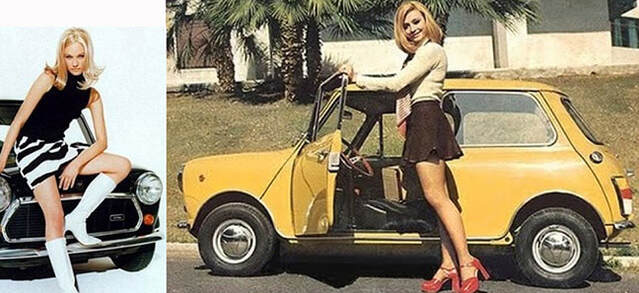 In the 1960's the Mini car helped inspire the name for the Mini skirt, a very short skirt popular at the time. In the 1960's the Mini car helped inspire the name for the Mini skirt, a very short skirt popular at the time. ------- --- The Mini Cooper arises ----- -------- In 1959 the car known as the Mini was introduced to the public and the world had never seen a car quite like it. Small nimble and compacted, with the Mini, "Less seems to be more". Certain innovations gives it a distinct bug like appearance and cuteness factor. The Mini was a package that came to symbolize the very essence of the youthful 1960s culture as a form of independence, nonconformity & spontaneity, along with even influencing styles of the times. -------At some point in time, Fashion met Car. --- In 1963 the Mini Skirt came into the public eyes as a fashion statement when British designer Mary Quaint (known as the mother of the miniskirt) began popularizing raised hemlines & named the fashion item after her favorite car: a Mini Cooper. The 1960s were defined by counter-culture—society was questioning traditional standards and ushering in a new era of expressive sexual freedoms. Thus the Mini became an alluring trend outside of the automobile. The mini skirt came at a time when the world was changing and it wasn't long before the mini skirt became a symbol. A symbol of the feminist movement, of female liberation expressing sexuality through the titillation of wearing very short skirts. ----------At another point in time, Art met Car.-------------------------- Over 50 years later the public continues it's infatuation with the Mini Cooper. as an art statement of the times through the cultural practice of Art Cars as a means of beautifying society & communicating positive art into peoples visions. The artist designer Sasso ( instagram: @Sassothecat ) was tasked in August 2023 with painting a 2013 Mini Cooper after being commissioned by a buyer ( Paul) who lives in Venice) as he wanted something remarkable for himself to drive around the areas and possibly also gift it to his teenage daughter. 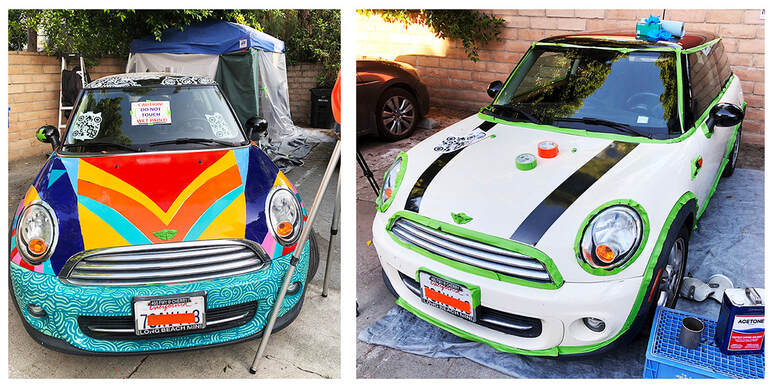 2013 Mini Cooper becomes transformed into an Art Car. 2013 Mini Cooper becomes transformed into an Art Car. T The paint used was a brand called One Shot which is a very high gloss, oil based lettering enamel made to be used on metal or brick outdoors. The Made In America paint has been around since the 1940's and in the 1950's became a favorite of artists who pin striped & painted cars. The artist also mixed some of his own colors & applied two coats when possible. The artists goal was a Transformative Art experience as a vehicle to communicate an appreciation of good energy & visual stimulation. World cultural Art, Surrealism, Modernism and artists like Leonardo Da Vinci, Alexander Calder, Piet Mondrian, Peter Max and others were meditated on during the paint process but merely as inspirations rather than influence, as the style is wholly original in itself as a signature work. Stream of conscious flowing lines are depictions of the air and water as waves of energy mixed with color vibrate in the light. Since Venice California is where the city meets the sea (slum by the sea to some) then an urban decay is left revitalized by new modern art depictions of the ocean and clouds. With art operating on such a much higher frequency than usually experienced, the physicality of the color structure is only part of the equation and the sub conscious plays a role in the communication as well since there are no words in this abstract piece.
You see it only once and know it, there is no filter, as the art is a bridge to a higher consciousness and creative evocation of the life force. The sub-conscious and visualizing played an important role in this art rendering on the Mini Cooper. The goal involves a transformation of consciousness through color & form. During the weeks long process of painting, the artist became aware of the writings of American mystic & esoteric philosopher Franklin Merrell-Wolff ( American b. 1887- d.1985 ) & it became a part of the artwork as it merged well with the Stream of Consciousness flow aspect of the Mini paint undertaking. Wolff devoted himself to the goal of transcending the normal limits of human consciousness. After exploring various mystical teachings and paths, he dedicated himself to the path of jnana yoga, which is the yogic paths of knowledge, action (karma), of loving devotion to a personal god and the path of meditation. He also studied the writings of Shankara. Wolff wrote the Philosophy of Consciousness Without An Object A Discussion of the Nature of Transcendental Consciousness. More here -- https://www.merrell-wolff.org/ “The ultimate objective is to facilitate, as far as possible, that event which, when achieved, is called Fundamental Realization or Enlightenment.” -- Franklin Merrell-Wolff The Mini Art Car now seen in Venice Los Angeles ( update: 01/29/2024 the Venice Mini now lives in Reno, Nevada U.S.A. Thank you for reading this, The Mini story ,which is part 2 of another blog entry about Art Cars called Art, Art Cars & the Beautification of our Urban Communities We hope that artists or anyone else who loves art and who have experienced the loss or theft of their artwork will learn more about it and successfully recover their work or be justly compensated. Art theft in any form is a serious crime against the people and culture. Art theft can take many forms but this blog entry is about the theft of a physical works of canvas artwork. Besides the physical, another form of art theft is copyright infringement using reproductions or replications of intellectual property as direct copies or as appropriated and derivative works. ( future upcoming blog). For your information and according to online sources: The FBI's Intellectual Property Rights (IPR) program investigates theft of trade secrets, counterfeit products, and copyright and/or trademark infringement cases. Intellectual property crime is committed when someone manufactures, sells or distributes counterfeit or pirated goods, such as patents, trademarks, industrial designs or literary and artistic works, for commercial gain. -------------------------------------------------------------------------------- We recently interviewed an American artist we will call "Artist" about the art theft (& recovery) of an Untitled Abstract canvas he was still working on before it was surreptitiously removed from his studio without his knowledge or consent. This relates his experience & perspective. We will trace the painting on it's journey from birth to eventually being liberated by the artist from the people who attempted to keep it. Catso: Have you ever had someone steal a piece of your artwork? Artist: Yes it has happened more than several times in one form or another ever since I started circulating my art & no doubt happens to many other people too. When something comes from a deep creative place and has soul then people will want to steal it because they in fact are missing something in their own souls. It's for sure a low conscious level thing of someone operating on a very low frequency. It's just not a very smart thing to do and it can also cause emotional harm to the artist. Catso: Tell us the details. Artist: In around 2017-2018, someone absconded with a large Abstract canvas of mine that was on the wall of a temporary Pop Up Studio concept I was attempting to do in Dallas, Texas. I briefly started the work in Los Angeles 2014 and then brought it to Dallas in 2015 on a visit there to work on it further with some other art. It was a part of my life for several years ( and is now back ). I tend to work on many pieces at once and sometimes there are gaps of time between the process. Sometimes my work goes through many changes and this painting is no exception. So in 2017 it was moved to the attempted Pop Up. After all, many great artists like Leonardo Da Vinci, Pablo Picasso etc sometimes spent years on a painting and lived with them during the process. Catso: So it turned up missing? Artist: It was gone and I only had one not very good photo of it (shown above) but this was from right before I added the white lines & other paints to it. I was leaving & worked on it right before I left. Didn't do a new photo it before I left. So I had no photo of what it actually currently looked like because I had returned to LA the morning after I worked on it. I couldn’t even show others what it looked like or file a theft report. I knew what it looked like of course but it's hard to describe painting. I also didn't really want to get the people in trouble but i wanted them to pay for it or give it back. 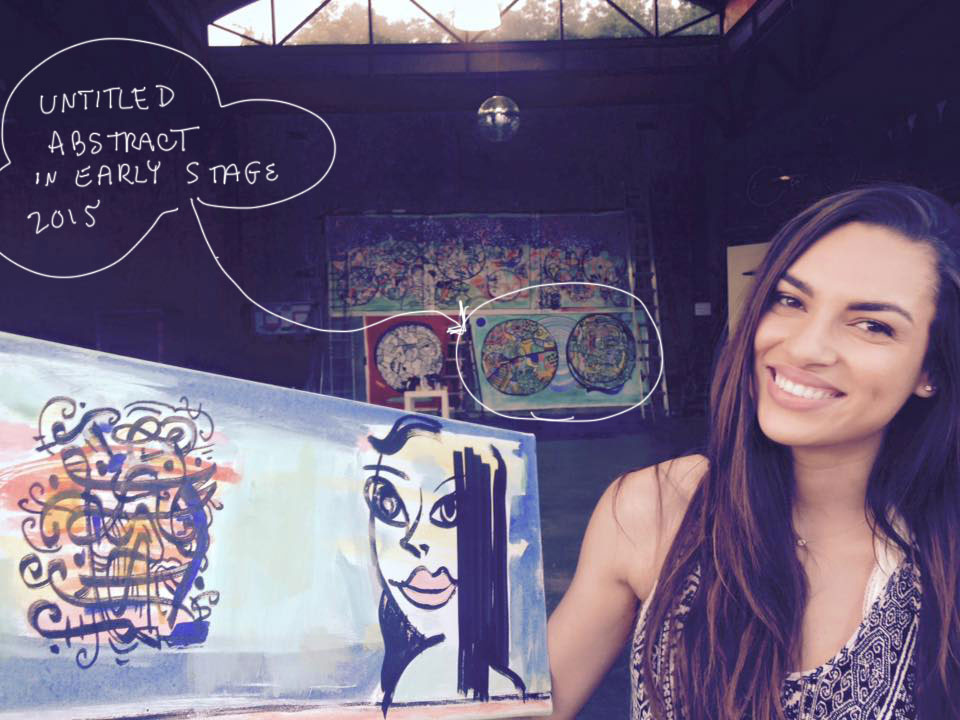 Sunnyvale, Texas --- Painting in background still being worked on seen from a distance of about 60 feet. This is before it was moved to where it was stolen. Sunnyvale, Texas --- Painting in background still being worked on seen from a distance of about 60 feet. This is before it was moved to where it was stolen. Catso: Tell us about it. Did you ever give up on recovering it ? Artist: Hell no I did not give up on recovering it. It took some time dealing with over a few years but I was going to keep searching & eventually locate it. My paintings, especially the large ones, are precious beings and lovely creations coming from the hand and heart of my soul. They all have a life of their own & project Transformative amazing energy. This is not a game. They are like my children and if one is missing it hurts my soul very much. They are a part of my life and then I might show it or someone buys it. They get their place. I knew or was hoping I was going to eventually get the painting back but I had to know where it was first, before it went underground. Catso: What was the painting like? Artist: It was a large colorful abstract work (around 6 feet tall x 11 feet wide un-stretched canvas) that went missing ( was stolen) from the attempted Dallas Pop Up. It started out in Los Angeles with a teal aqua color and black outlined circular forms with abstract colored shapes then eventually ended up with the flowing white lines and movement so you can't really see the circles much anymore. Or at least overtly see them. I say missing but eventually I found out that it was actually now hanging in the living room of a house in Dallas which I did not know the location of but I knew the person’s name and that they worked at an Architecture firm in some sort of capacity. I knew if I made too much noise that it might get hidden away and I might never get it back. They could say I was harassing them or something if I just asked about it. If I raised a ruckus then it would get too hot for them and they might even destroy it as evidence rather than admit they had it. Plus I know the owner of the Architecture firm and didn't want to involve them or cause perceived drama and I felt stupid dealing with such stupid people or something along those lines. Not to mention I was 3 states away. Catso: So you contacted them off and on but they never responded or got back to you. Artist: No response but this seems like the playbook for people like that. A variation has happened before. There was a large ( 6' x 6' ) canvas mixed media collage Cowboy/Snake painting I did get back years before this (1993-1994) from different people & they did the same thing. I did get it back after I found out they had it. It's this sort of thing where they ignore you, meanwhile this large painting of yours is hanging in their house that nobody paid for. This Cowboy/Snake painting i had actually donated for an auction to raise money for a charity & so there was a stipulation in the contract about it being returned to me if it was not sold. I am not sure it even made it to the event and auction because I didn't go. But somehow it ended up somewhere else so... Catso: So these new people with the Untitled Abstract painting did the same thing and ignored your attempts to contact them? Artist: I barely knew the people who had it in their house (met them once briefly) & the person wouldn’t respond at all about the painting of mine that was literally hanging in their living room. A large beautiful painting like that is not something you forget as it empowers the whole environment. I know for a fact that my art can transform a room because I've seen it with my own eyes. A place might be nice and look good but you add my art and you can't see the room without it anymore. It projects an energy and soul that is palpable. Art. They just completely ignored me when I contacted them on social media or another person involved said they didn’t know what I was talking about when I messaged them. Or they would act like I was bothering them and or try to flip the story. I just wanted to discuss a fair price if they liked the work and was willing to accept some sort of payments or the return of the piece but got zero response. I wasn't interested in anything else. If they liked the art and wanted it then I wanted them to have it as well. For a price which was never discussed and I had no idea about. 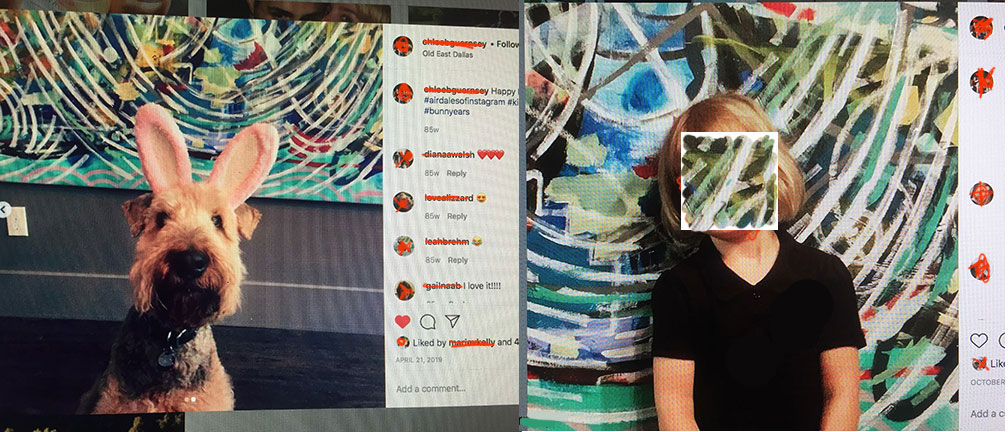 Stolen Untitled Abstract painting posted on Instagram twice with their dog and child in front of part of it. Stolen Untitled Abstract painting posted on Instagram twice with their dog and child in front of part of it. I even saw one photo on Instagram with the person’s child posing in front of it. For real she was posting it on instagram. The whole painting wasn’t shown only a small section of it. I probably commented about it but can’t remember. They didn’t respond of course. They were being cagey enough to not show the whole painting and probably thought since it was a year or so that they were in the clear. And another posting ( April 21 2019) with their dog in front of it but again they only showed part of the art and not the whole painting. Again, all silence when I contacted them to ask about the artwork and zero response. I could even tell from the limited view on Instagram that the perpetrators had mounted it but also shortened it considerably by many inches in the height and width. Such ignorance. Probably to save money when getting it stretched but they actually damaged it ( has since been repaired). Catso: Did all this make you feel bad? Pissed off?
Artist: Sort of yes of course. They really thought they could just take a large painting like that and not pay for it. It was very disrespectful and demeaning to me as a human being and artist. Through the course of several years of off and on efforts, I was trying to locate the painting while I lived 1,600 miles away in Los Angeles. It's a difficult and time consuming thing to do alone from a distance while also trying to work on new stuff & survive. Plus the Covid times and that whole vaccine scam. LA had a disgusting response to it all and their policies actually killed more people. Closing the beaches and hiking trails? Total nightmare & ridiculous. But one day in 2021 after the covid experience of having lots of time to think in the draconian lock downs we experienced out here in LA, I had enough, and so finally got their home address from someone helpful ( Thank you person ) & I then wrote a letter or somehow got it to them right away & gave the people a specific 1 week time frame ultimatum to either return the painting to a specific location in Dallas, I could have a courier pick it up at their house or they could face legal consequences for failure to do so. Once I had their address I did start to file a stolen art report even though the theft happened 3-4 years ago but they gave me the number to the local neighborhood station in the area where it happened and then things were solved before it got that far. In Jan 2022, when I finally got it from the place they dropped it off in 2021, I was very overjoyed to see this large abstract canvas again in person and absorb the energy. It was a big relief. Catso: We are happy you got it back and persisted in this. ------------------------------------------------------------------------------------- People committing Art theft of paintings, or appropriations, plagiarizing, making derivative works or such things for commercial or idealistic purposes is nothing new. People steal what they perceive to be valuable and then don’t want to pay for it. In the case of an original piece of artwork, it becomes a different sort of theft. The Theft That Made The 'MONA LISA' a Masterpiece On Aug. 21, 1911, the then-little-known painting known as the Mona Lisa, was stolen from the wall of the Louvre Museum in Paris. --- And a legend was born. Before its theft, the "Mona Lisa" was not widely known outside the art world. Leonardo da Vinci painted it in 1507, but it wasn't until the 1860s that critics began to hail it as a masterwork of Renaissance painting. After the Louvre announced the theft, newspapers all over the world ran headlines about the missing masterpiece and this became an incredibly famous painting — literally overnight. The hapless French intelligence had no clues and many wild theories abounded about the culprits who stole it. Innocent and surprised by the accusation, famous artist Pablo Picasso was also considered a suspect and was questioned. 2 years and 4 months later, the painting was recovered and the Italian who stole it arrested. He had left it with an Art Dealer for appraisal in hopes to sell it and the painting was quickly identified and recovered. "He said later that he was trying to return it to Italy — that he was a patriot and it was stolen by Napoleon — and he was trying to return it to the land of his birth," according to writer and historian James Zug. SInce the Mona Lisa was painted in Italy then carried to France by Leonardo where he died, we can sort of see the point of the patriotic art thief. How did the greatest painting in the world end up owned by France ? It was painted in Italy over the course of many years the artist carried it with him. We previously write about the Mona Lisa in our blog about Mr. Brainwash here. ----------------------------------- JACKSON POLLOCK painting found in garage could be worth $15 million. Not really stolen but successfully recovered, in 2017, a lost Jackson Pollock painting was found in an Arizona garage and later authenticated as the real thing. After digging through the garage the painting was located underneath some paper stuff and posters. ‘God, that looks like a Jackson Pollock,” appraiser Josh Levine told CNN. The Pollock painting was later sold at auction for $15 million. In other incredible recent Pollock news, on March 22, 2023, officials in the country of Bulgaria say they discovered a previously unknown painting by Jackson Pollock during an investigation into an international art trafficking operation. The painting could be worth as much as $54 million We hope if you are an artist or collector that you never have art stolen but if it happens we hope you get it back. -John Catso 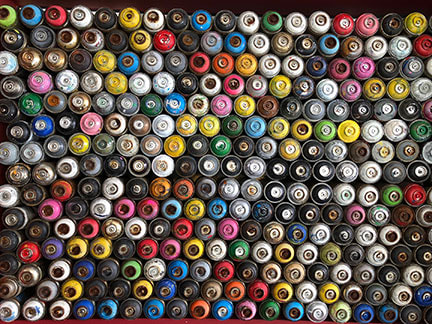 Recycled spray cans as decor. Recycled spray cans as decor. Do not despise my opinion, when I remind you that it should not be hard for you to stop sometimes and look into the stains of walls, or the ashes of a fire, or clouds, or mud or like places, in which, if you consider them well, you may find really marvelous ideas. “ – Leonardo Da Vinci : A Treatise on Painting. Codex Urbinas written between 1482-1519 & Published 1651 SAMO© AS AN END TO MINDWASH RELIGION, NOWHERE POLITICS AND BOGUS PHILOSOPHY. ---- Literary Graffiti of SAMO ( Al Diaz & Jean-Michel Basquiat) Circa 1980 NYC. One fine Sunday we made plans to venture out into the dystopian landscape of sunny Los Angeles to visit the Mr. Brainwash Art Museum in the posh city of Beverly Hills. A Pop Up museum with plans to travel, it sits in a bustling area and more so on this day when a crowded art fair was open across the street in a park. The moniker Mr. Brainwash, a “nom de guerre” & artistic persona, was spawned out of the 2010 documentary movie, Exit Through the Gift Shop, which is a fascinating story in itself about an art genre they call “Street Art”. A newer label of art branding, "Street Art" is considered a subgenre of Graffiti . Since the term Graffito (to scratch or draw unto walls) has been around since humanity began, then it’s probably correct. Mr. Brainwash calls his own movement by the label "Street Pop" and the museum houses some of his oeuvre since he entered the arena of Pop. A man larger than the life itself, Mr. Brainwash not only evolves as a work of living art & a busy artist brimming with energy but is also a skillful raconteur who already knows the game well. He seems to be having fun doing it because for him -- Life is Beautiful. Two important American artists (both long dead) not mentioned in the Exit Through the Gift Shop movie yet seem to play an inspirationally important role in the Mr. Brainwash Art Museum concept is Artist/Activist Keith Haring (b.1958-d.1990) & Neo Expressionist artist Jean Michel Basquiat (b.1960-d.1988). Both are NYC artists who exploded like rockets into the 1980’s art world money speculation scene yet sadly both succumbed as the decade closed in on their short burst. Both careers began and ended on the same NYC streets as artists of the graffiti subculture (Street Art) and their resultant infamy catapulted them both into worldwide art world fame. Starting in 1980, Haring’s animated simple cartoon like imagery first drawn in white chalk on blank black subway advertisements, was seen by millions of people on the NYC subways before most people knew what it even meant or even who it was doing it. What is it advertising? Strange lined figures dancing or gesturing up at flying saucers, a radiant baby, many radiant babies, more figures running around a barking dog... From 1980 to 1985 it is estimated that Haring drew over 5,000 images in the NYC subways alone and this helped launch a highly successful art career. Haring even opened a NYC retail store called the Pop Shop to purvey his wares he had produced. In Haring's world the mantra is, "Art is for Everybody." Keith Haring sometimes (oftentimes) drew and painted in a somewhat calligraphic "Stream of consciousness style " using fluid acrylics, oils and sumi inks with brush or marker. In his own words : "There was also this stream-of-consciousness thing – this mind-to-hand flow that I saw in Dubuffet, Mark Tobey, and Alechinsky" -- During these times, ART as a sort of Art-To-Go, became the norm as anything created sold & some artists of the time (Haring) even referred to it as "Fast Art". ------- Artist Basquiat meanwhile first gathered infamy (along with his art collaborator friend Al Diaz) with the creation of a fake religion under the tag of SAMO© . The slogan tag SAMO stands for Same old (ole) Shit & according to a later Basquiat interview, was “first created to be a logo like Pepsi.” The "Literary Graffiti" of SAMO became an icon in the Lower East Side of Manhattan, where the cultural influences of rap, punk and street art coalesced, heavily influencing the aesthetic of the decade(s) to come. Starting in 1978 while both were still in high school, the SAMO writings would appear large on walls as words, phrases, bombastic prose and untold truths,. It usually appeared in black writing along with a copyright symbol, spray painted or hand drawn on walls with such information as : SAMO© MY MOUTH, THEREFORE AN ERROR. PLUSH SAFE...HE THINK. MAKE SOUP. BUILD A FORT, SET THAT ON FIRE. - SAMO© SAMO© SAVES IDIOTS AND GONZOIDS... SAMO© AS AN END TO BOGUS PSEUDO INTELLECTUAL. SAMO©...4 MASS MEDIA MINDWASH ,NOWHERE POLITICS AND BOGUS PHILOSOPHY. SAMO© AS AN ALTERNATIVE TO GOD. SAMO© ... 4 THE SO-CALLED AVANT-GARDE. Al Diaz says “SAMO was like a refresher course because there's some kind of statement being made. It's not just ego graffiti.” Art critic Jeffrey Deitch called it "disjointed street poetry" and yet Basquait quickly went onward to capitalize on the attentions generated to quickly becoming a heavily collected & much shown artist in galleries worldwide. Working primarily on canvas or paper ( other medium could be old discarded doors or windows, wood panels etc) Basquiat combined African, Aztec, Hispanic, and ancient Roman and Greek imagery with his own invented iconography and graphic marks in works that emphasized the physical and the gestural aspects of the artistic process. Repetitions of words, lists, names, scrawls, cartoons, anatomy drawings and voodoo incantations alike, his visual savagery articulated a vivid mind eager to cash in on the buying frenzies at the time. Even before Basquiat ever showed his work in any galleries or was known, Blondie (Deborah Harry bought the first canvas he ever sold ( $200) when they met on the music video ( 1981) shoot for her hit song Rapture. He even befriended Andy Warhol (b.1928- d.1987) & they later collaborated on a series of large paintings together. The wealthy older Warhol took an interest in the younger artist, even renting him a loft/studio from his real estate portfolio at one point. It was the same loft where Basquiat in 1987, age 27, was later found dead from a heroin overdose. In 2017, Basquiat became the most expensive American artist ever sold at auction when one of his “Untitled 1982” skull paintings sold for a whopping $110 million. This painting was first shown and sold at Basquiat's debut American solo exhibition in the Annina Nosei Gallery in year 1982. It is one of the artworks he painted in her gallery basement space there where he ensconced himself to work (a sometimes controversially viewed arrangement in the art world.) Annina Nosei will forever be associated with Jean-Michel Basquiat whom she helped launch into the mainstream art world as his first American art dealer, and whom she set up in a spacious studio where he could paint large canvases. Her connection with Basquiat was a career highlight, but only one event in her distinguished and ongoing art career. The "Untitled" 1982 Skull painting's provenance can be traced from it’s original 1982 studio inception in the gallery basement when he was 21 years old, to it's purchase price of $4,000. 2 years later it sold for $19,000 . Not bad for a painting which most likely took no longer than 10 hours (imo & experience 8-10 hours max) for him to paint & later in 2017 sold for the hefty $110,000,000. If you like the artist Basquiat and want to learn more about his work then we have a first edition hardcover book for Sale here. Many of the second floor paintings we saw at Brainwash Art museum revolved around a heady display of Mona Lisa canvas reproductions in gold gilded frames with artful scribbles and artfully applied paint added for effect. The Mona Lisa, painted by Leonardo Da Vinci, is considered an archetypal masterpiece of the Italian Renaissance, it has been described as "the best known, the most visited, the most written about, the most sung about, the most parodied work of art in the world". Enter Mr. Brainwash… Leonardo di ser Piero da Vinci was an Italian polymath of the High Renaissance who was active as a painter, draughtsman, engineer, scientist, theorist, sculptor, and architect. Although he is best known for his dramatic and expressive artworks, Leonardo also conducted dozens of carefully thought out experiments and created futuristic inventions that were groundbreaking for the time. His keen eye and quick mind led him to make important scientific discoveries, yet he never published his ideas. His Treatise on Painting, taken from pages in his notebooks from 1482-1519, was first published in France in 1651. The main aim of the treatise was to argue that painting was a science In year 1503, Leonardo began work on an oil painting ( Mona Lisa) that was still in his studio when he died in year 1519. It was painted & worked on intermittently over these many years on a piece of 2′ 6″ tall x 1′ 9″ wide Poplar Wood panel. Later X-Rays have revealed his own fingerprints on it. So we know it was a highly valued treasure by the artist as he carried it with him during studio moves & never parted with it during his lifetime. Some theories, based on his own writings, point to it being a portrait of his own mother, Caterina, whom we know later lived with him under his care.
|
| "Photography is not art." - Man Ray 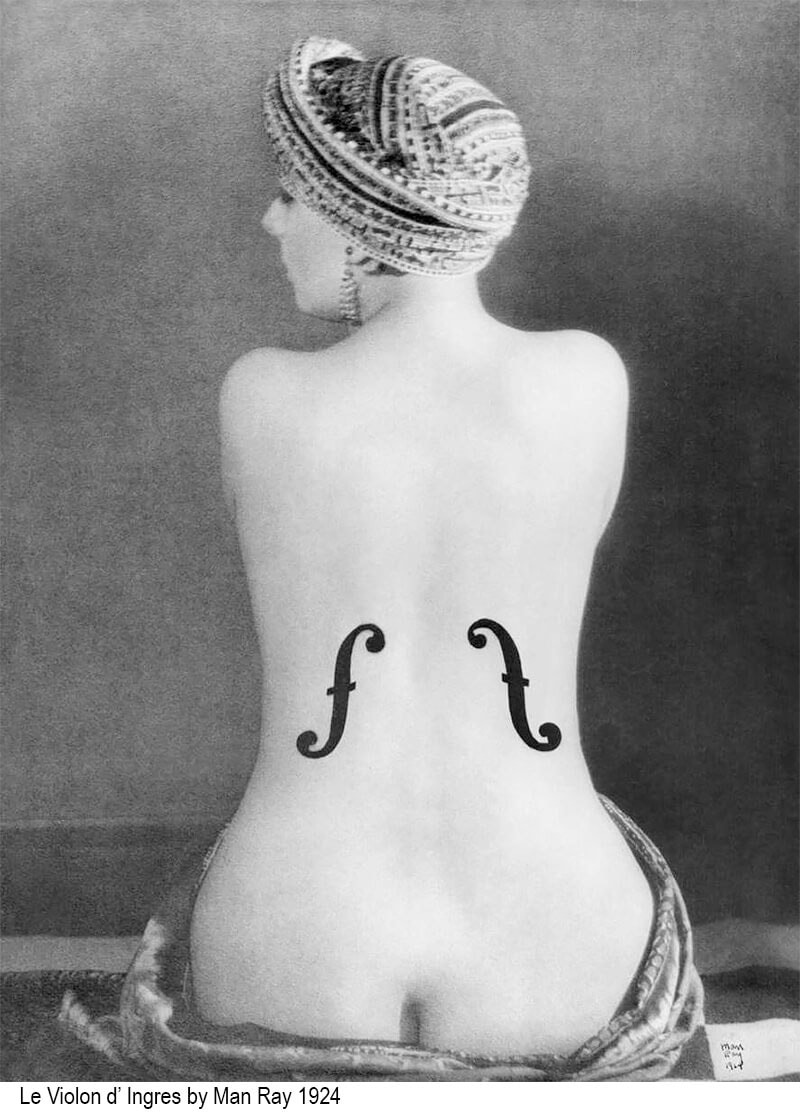 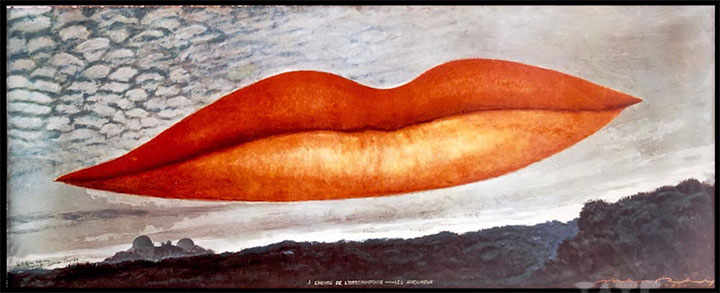 On 14 May 2022, L'Violon d' Ingres ( Ingres Violin), a black & white photograph created by Man Ray ( Emmanuel Radnitzky 1890-1976 ), set a new record for the most expensive photograph when it sold for $12,400,000 ( 12 million & 4 hundred thousand dollars ) at auction. Inspired by Neo Classical French painter Jean-Auguste-Dominique Ingres, this 29.6 cm × 22.7 cm (11.625 in × 8.9375 in) photograph is now owned by the Getty Museum in Los Angeles. The photo is captivating in it's surrealist simplicity, a nude photograph of KiKi De Montparnasse', ( Alice Ernestine Prin ) his model, lover and companion at the time. Kiki was a French cabaret performer, painter, and artists’ muse who acquired her nickname for being a fixture in the bohemian circles of the Montparnasse neighbourhood in Paris. She modeled for numerous artists such as Amedeo Modigliani, Man Ray, and Alexander Calder. In Ingres Violin, she is posed half naked wearing a turbin, seen from the back with violin sound holes positioned on her back, thus transforming her body into a musical instrument, This picture maintains a tension between objectification & appreciation of the female form. Man Ray was a pioneering American fashion & portrait photographer who worked primarily in Paris and was one of the key figures in the Dada art movement but his work also straddles surrealism. Developed in reaction to World War I, the Dada movement consisted of artists who rejected the logic, reason, and aestheticism of modern capitalist society, instead expressing nonsense, irrationality, and anti-bourgeois protest in their works. Man Ray was also a painter and one of his works is The Lovers 1933, created in the aftermath of his passionate and sometimes volatile relationship with the beautiful American photographer and model Lee Miller. In their Surrealist love affair, she was often his model, frequently nude, and her sculptural presence in front of the camera – honed as a fashion model, is one of the most tempestuous and creative relationships in the history of art. The naked body has, since ancient times, fascinated artists of all backgrounds. Sculptors, painters and illustrators competed to celebrate the body and represent it in its original state, as evidenced by the works from ancient civilizations, notably Egyptians, Greeks and Romans. Prehistoric representations of the naked human body can even be seen on the painted walls of caves and prehistoric statuary art. But if masculine nudes prevailed in Antiquity, especially among the Greeks, the trend has now shifted and it is the female body that has become the ultimate muse for artists. In 1850 France, photographer Jean-Louis-Marie-Eugène Durieu (1800 - 1874) collaborated with artist Eugène Delacroix on a series of nude photo studies depicting a human bodies male and female. These model photos were created to help the artist paint & draw without having the expense of a live model. Delacroix then called these "palpable demonstrations of the free design of nature," & later drew from Durieu's photographs. Durieu was a founding member of the Société heliographique in 1851 and the Société Française de Photographie in 1854. Although the first known printed nude photograph was a male ca. 1840 France, the female form quickly grew in popularity for this new printing medium. Ever the entrepreneurs, the French quickly capitalized on this by producing postcards of females in various stages of dress, undress and often completely naked. Printed on a postcard sized piece of cardstock featuring a photograph of a nude or semi-nude woman. Such erotic cards were produced in great volume, primarily in France, in the late 19th and early 20th century. The cards sometimes depicted lesbians. Some of the most popular models of the day appeared on them as well as singers, actors, , circus performers & burlesque strippers. Nude photography has long been assimilated to a sub-genre of eroticism, no doubt because it mainly depicts naked women, but is now collected as an art form & still used by many artists in their work to understand the human body depicted. | |
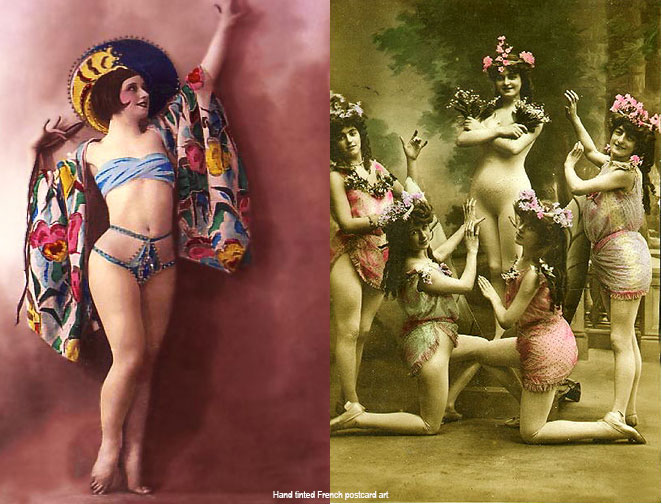 Hand colored photograph for a French postcard circa 1910
Hand colored photograph for a French postcard circa 1910 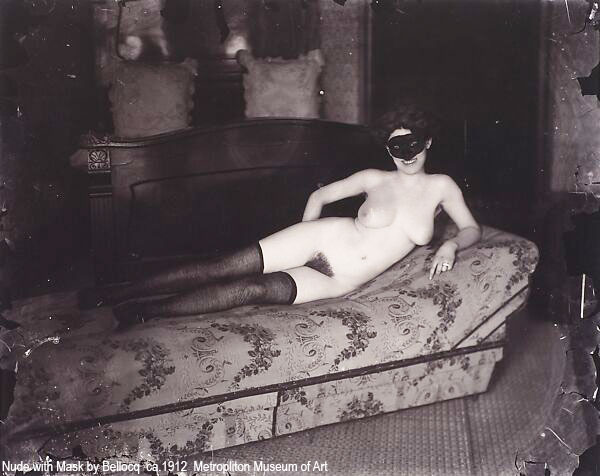 Nude with a Mask by E. J. Bellocq
Nude with a Mask by E. J. Bellocq In 1897 New Orleans, Louisiana, a certain local politician declared a law that "whoring was illegal" in any neighborhood of the city except those bordered by a set of 16 blocks. This "Cathouse Neighborhood", soon became known as "Storyville" and where a photographer known as Bellocq (1873–1949) shot a series of 84 sympathetic photographs of a group of Storyville whores. Only of women, none of these photos depict any sexual acts or any implied erotic content but seem to be merely records of someone's obsession & documentation of the times.
Nude with a Mask, ca.1912, a 12.8 × 18.1 cm (5 1/16 × 7 1/8 in.) gelatin silver print from glass negative, owned by the Metropolitan Museum of Art, is one such photograph.
Storyville is not only known for the world's oldest profession, it is also the incubation area for the time frame in the creation of the JAZZ music form.
Nude with a Mask, ca.1912, a 12.8 × 18.1 cm (5 1/16 × 7 1/8 in.) gelatin silver print from glass negative, owned by the Metropolitan Museum of Art, is one such photograph.
Storyville is not only known for the world's oldest profession, it is also the incubation area for the time frame in the creation of the JAZZ music form.
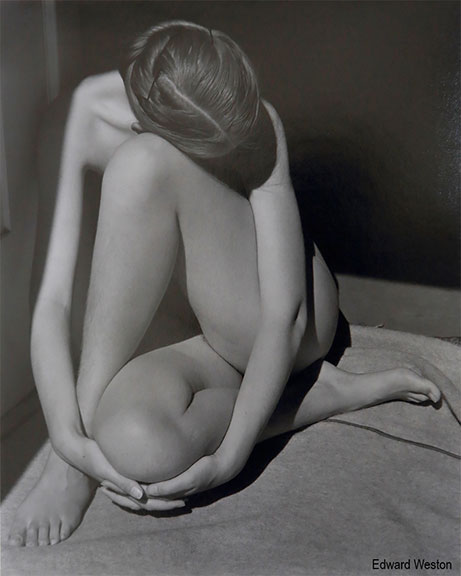 Black & white nude by Edward Weston (1886-1958)
Black & white nude by Edward Weston (1886-1958) Another American, Edward Weston, was a vital pioneer of Modernist photography, who helped elevate the status of his chosen medium to that of a revered art form. He found early commercial success with a pictorialist style of image-making, using a soft-focus lens to create painterly portraits, but by the 1920s had adopted an increasingly experimental approach to his craft.
On a trip to Mexcio, he spent the next 5 years developing the radical stylistic traits that would come to define his later practice. This involved using a close-up lens and natural lighting “to make the commonplace unusual”, and saw rocks, clouds and plants rendered remarkably sculptural studies in line and texture.
On a trip to Mexcio, he spent the next 5 years developing the radical stylistic traits that would come to define his later practice. This involved using a close-up lens and natural lighting “to make the commonplace unusual”, and saw rocks, clouds and plants rendered remarkably sculptural studies in line and texture.
Norman Parkinson (1913-1990) was a noted British fashion and portrait photographer who shot beautiful images for magazines. Starting out as a Royal Air Force photographer in World War 2 he later gravitated towards fashion photography.
Parkinson shot First Nude in Color in 1951 for a Vogue magazine beauty book.
The photo depicts a naked fashion model from the side, posing face down on a chaise type lounge chair in a sort of beige antique white juxtaposition of minimalist colors. Her body is long & her hair is immaculately coifed in this mid century masterpiece.
Diane Arbus (1923–1971), was an American photographer who shot poignant images of the various people she came across in her street photography. She photographed a wide range of subjects including strippers, carnival performers, transvestites, nudists, people with dwarfism, children, mothers, couples, elderly people, and middle-class families. People on the fringes of society fascinated her and she oftentimes got to personally know her subject matter as she documented her artistic visions. In 1963, she made a series of nude images at a nudist camp in New Jersey. One such is, Waitress, a gelatin silver print (37.2 x 36.3 cm (14 5/8 x 14 5/16 in.) now owned by the Metropolitan Museum of Art.
| Patrick Nagel (1945 – 1984) was an American artist and illustrator who created a remarkable archive of images epitomizing 1980's chic. First for Playboy magazine then branching into fine art seriography, he created popular illustrations on board, paper, and canvas, most of which emphasize the female form in a distinctive style, descended from Art Deco and Pop art. His minimalist style defined an era with cool, seductive women that became the most iconic of any single generation. Utilizing staged photography of nude or semi nude uninhibited female models he met through his work with Playboy, Nagel then painted them on canvas or made film positives of his photos for silk screening (seriograph) as limited edition works of art. These alluring images soon became immortalized in popular culture at the time. In 2020 one such image, Jeana 1983, a 40" x 25" acrylic on canvas, shattered the world record for Nagel when it sold at Heritage Auctions for $350,000. |
Le Corbusier , A work by Sasso features a naked female ( Melissa) stretched out on a vintage Le Corbusier chrome and leather chaise lounge. A lover of architecture & nature, Sasso also employs silk screening (seriography), dye sublimations, collage & digital imagery in his painterly oeuvre.
James Sasso briefly attended commercial art school where he studied photography, fashion illustration, life drawing, technical drawing, design, painting and other art mediums, Sasso then began experimenting with painting & drawing on canvas, photography and art on clothing to create a unique style in fashionable tee shirts and he is the main artist at ARTtoGO.com
Sasso created the mixed media work Los Angeles in 2018 which utilized a photograph he shot of a girl (Victoria) , digital imagery, as well as collage to create a 24" x 24" image that can be replicated much larger as artworks on canvas.
James Sasso briefly attended commercial art school where he studied photography, fashion illustration, life drawing, technical drawing, design, painting and other art mediums, Sasso then began experimenting with painting & drawing on canvas, photography and art on clothing to create a unique style in fashionable tee shirts and he is the main artist at ARTtoGO.com
Sasso created the mixed media work Los Angeles in 2018 which utilized a photograph he shot of a girl (Victoria) , digital imagery, as well as collage to create a 24" x 24" image that can be replicated much larger as artworks on canvas.
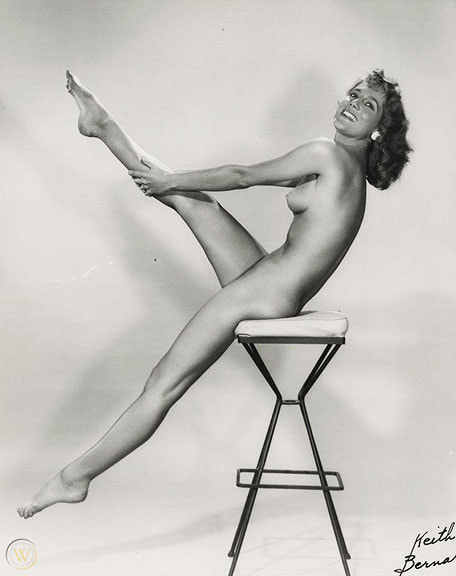 1950's pinup photo by Keith
1950's pinup photo by Keith 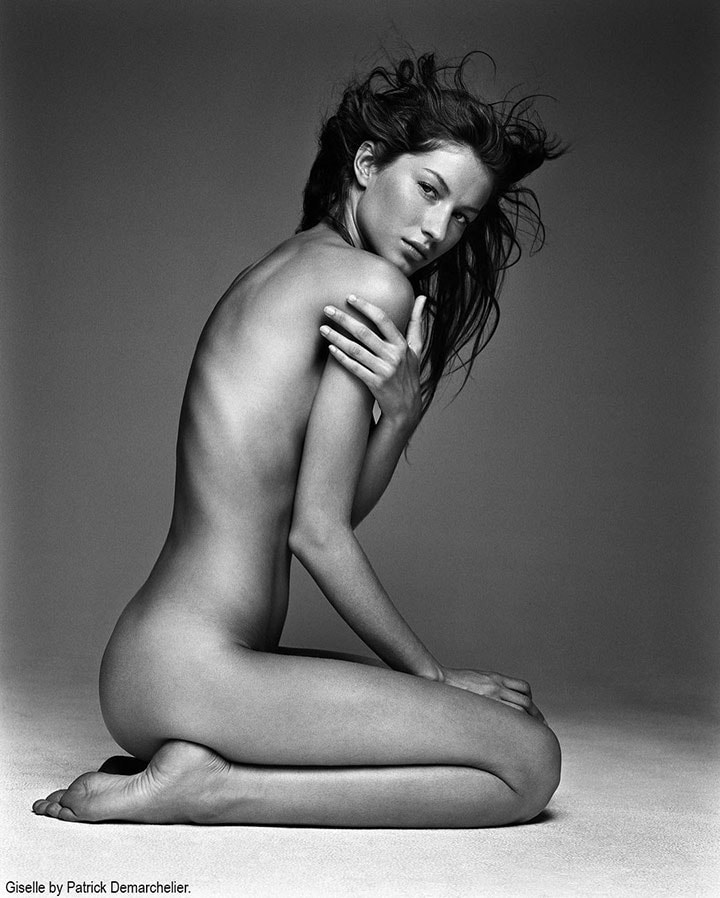 Giselle by Patrick Demarchelier
Giselle by Patrick Demarchelier All in all, nude photography since it's inception at the beginnings of photography, has continued to be seen as a collectable art form and have an inspirational impact on the making of art by muse driven artists throughout the generations.
Special Thanks to other Cultural Practitioners like Phil Stern , Helmut Newton ,Terry O'Neill, Patrick Demarchelier & countless others who manage to keep this aesthetic tradition alive for the benefit of humanity & enhancement of world culture.
Special Thanks to other Cultural Practitioners like Phil Stern , Helmut Newton ,Terry O'Neill, Patrick Demarchelier & countless others who manage to keep this aesthetic tradition alive for the benefit of humanity & enhancement of world culture.
11/7/2021
November 07th, 2021
According to some reports, Los Angeles has emerged as a global epicenter of art & culture, with a distinct, interwoven multi-cultural influence unique to the city. |
Listen to A Conversation with Ellen & James Sasso: Making Art
with Senior Art Director Jesús González
Culture Club
Link - https://anchor.fm/culture-club5
Sponsored by:
integer the growth company.
What inspires art and other questions.
Does art choose the artist or the artist choose art?
Can Art Cars really make a positive difference in our modern lives and culture?
What is art? Is art important?
We need art in our lives to enhance the subtle energies of humanity & hopefully bring us deep feelings of inspiration, empowerment, awe, joy & other emotions. Art is something that stimulates an individual's thoughts, emotions, beliefs, or ideas through the senses. Whether experiencing the art or performing it, a beneficial energy is created in the process .
As the artist Pablo Picasso once stated; "Art washes from the soul the dust of everyday life".
It's a best practice to experience forms of art that inspires us in many different way. Art can be a visionary form of objectification & create a healing stamp on the subconscious when experienced.
One object today that is ubiquitous in our everyday life is the automobile/car or motorcar, which is used for transportation on roads. A relatively new creation of humanity as we know it, the year 1886 is regarded as the birth year of the car when German inventor Karl Benz patented his Benz Patent-Motorwagen. Of course there has been many many others produce manufacture cars since then & in very large quantities, spreading across the world even now through mass consumerism.
Cars are one of the leading causes of air pollution & climate change ... Passenger vehicles & commercial, are a major pollution contributor, producing significant amounts of nitrogen oxides, carbon monoxide, and other pollution. Vehicle pollutants harm our health and contain greenhouse gases that cause climate change. Burning gasoline and diesel fuel creates harmful byproducts like nitrogen dioxide, carbon monoxide, hydrocarbons, benzene, and formaldehyde. In addition, vehicles emit carbon dioxide, the most common greenhouse gas.
At some point in time after automobile mass productions became the norm & humans bought many cars, is the marriage of art & car; the Art Car. Art cars are sometimes but not always driven and owned by their creators, who are sometimes referred to as "Cartists."
The Art Car is a very interesting new genre in art history that could also be considered a form of ultimate Street Art, although it existed before this term was ever coined.
One definition we came up with (with help from internet) is - An art car is an automobile vehicle that has had its appearance modified as an act of personal artistic expression. An Art Car is basically a mixed media sculpture on wheels ( unless the wheels have been removed ) , a hand painted (or air brushed) expression on a canvas of metal, steel, plastic & rubber, sometimes utilizing 3d objects.
-
Beyond the 2D applications of paints, 3 dimensional objects can be affixed or even the whole car itself can be stripped down, reshaped, and morphed into what is sometimes called Mutant Vehicles (more on that later).
An Art Car can be mobile & driven on roads or even a stationary object acting as an installation.
One example of stationary cars acting as outdoor Art Car sculpture is Cadillac Ranch on the road just West of Amarillo, Texas. In 1974, a row of ten vintage tail fin Cadillac cars (1949 Club Sedan to the 1963 Sedan de Ville ) were half buried nose down into a dirt field along the Route 66 highway there. These Great Monuments, we are told, represent America's hopes and dreams, art and commerce, materialism and spiritualism, folly and fame. Cadillac Ranch has since become a ritual road side attraction site for those who travel along the mother road. The remnants of the still buried cars are now covered in ever changing layers of bright colored spray paints and this installation also exists as a participatory event.
In 1955, 70 years after the first 1886 automobile creation in Germany, Los Angeles artist Kenneth Howard aka Von Dutch ( 1929-1992) hand painted flames on a 1955 Mercedes 300 SL owned by Earl Bruce. Von Dutch was inspired by the hand painted fearsome images & flames on WW2 fighter planes and he was part of the nascent pin striping hot rods/vehicle culture of Southern California. This particular Mercedes was actually the first of it's kind stateside so the car itself was seen by most sports car guys as an absolute shrine to German ingenuity and technology. Like art, opinions can vary & some people found this to be "desecrating a shrine" and the art car version was not well received at the time, although surely it attracted great interest as art.
Carmaker BMW is a leader in many things automobile & this includes the culture of Art Cars, as they have been a trendsetter in it since at least 1975 when .American artist Alexander Calder (1898-1976) put his art style on two 1975 3.0 CSL racing cars,
The result wasn’t just a claim of the first Art Car, or that this car was raced at Le Mans in 1975, but the inauguration of BMW’s Art Cars as we know the series today.
Calder’s piece formed the foundations for BMW’s ‘Art Car’ collection and many other contemporary artists ( Andy Warhol, Sandro Chia, Ken Done, Roy Lichtenstein, David Hockney & others) have since given their hand to this oeuvre, as both official and unofficial versions.
In 1979 artist Frank Stella painted a BMW M1 Procar as part of his "Polar Coordinates" art series. In 1987 Keith Haring painted a red BMW Z1 at an art gallery in Düsseldorf, Germany with his signature style and distinctive range of emblematic signs.
In 1996 Dallas, Texas, artist Jimmy Sasso was tasked to paint a 1996 BMW 320i for a marketing promotion involving a popular radio station Using oil based mediums, the car took 3-4 days to complete this mixture of abstraction & hand drawn symbols.
John Lennon Rolls Royce John Lennon of the Beatles bought the 1965 Phantom V limousine before he even owned a driver’s license. Originally black with black leather upholstery, Lennon grew bored of the all-black vehicle & he was inspired to commission a garish paint job in the Romany style. An artist named Steve Weaver completed the work in May 1967. The bill was £290, about $9,200 in today’s dollars.
Here in 2021 Art Cars are emerging as a popular expressive art form and important as a beautification of our urban areas & roads in communities. Aside from the cultural enhancements is the recycle aspect or idea of making beauty out of a utilitarian machine that is a major cause of Global Warming and is helping to destroy our planet we all live on. Keeping these 10,20 & even beyond 30 year old cars alive and on the road is truly an art in itself. A labor of love, an art object.
Through the power of art an up-cycle recycle process occurs to transform a lowly used air polluting car into a roving art statement to be enjoyed and appreciated by the many, without anyone going to a gallery or museum. An old car can become elevated into an art object & generate happiness to others and help heal society through these creations as they rove around not as a mere car but as art too.
In present day cities, artists are helping to spread this inspiring tradition & elevate our consciousness through the arts & propagate good energies using cars as that expressive vehicle.
A 1991 Chevrolet Blazer S10 -- This artwork titled Dream Warrior by Sasso, was started in early 2020 to artfully help heal a society in fear & repression from events. This vehicle for art blends into the urban landscapes as well as organically into natural settings, yet the colors, art & visual story create a bridge for the viewer into the fantastical realm of art appreciations sometimes without even realizing. Free form drawings & brushwork create "energetic movement mixed with bright color and juxtapositions to inspire one into happiness". the artist uses it as a vehicle to bring about art awareness as well as explore nature .
Swirling lines into organic shapes and symbols, writings & trans cultural surrealism adorn a 1989 Mercedes Benz 500 SEL that was painted in 2019 & sometimes roams the streets of Los Angeles getting 8 mpg but drives really great, smoothly sailing down the 405 freeway or stuck in traffic to the beaches. This Art Car generates much fanfare from viewers and inspires all to witness the greatness of art in our communities.
-- All Mutant Vehicles are Art Cars but not all Art Cars are Mutant Vehicles. -
One unique genre of the Art Car, is the Mutant Vehicles of Burning Man. Burning Man, comprised of Black Rock City, a temporary art city which emerges in the sometimes hostile environment of the Black Rock Desert, a remote landscape in Nevada.
A yearly event taking place over 8 days in late August, at least since the year 1991 at this location, Burning Man features various modes of camping, lots of people offering fun among large sculptural forms, performance art, sculpture installations, as well as Art Cars called Mutant Vehicles which roam the areas night & day, lit up with light, flames or even lasers & carrying people around while sometimes blaring loud music.
With a speed limit of 5 mph, these mutants come in all sizes and shapes as they adorn the beautiful surrealistic flat desert called the Playa, an ancient dry lake bed made of hard packed white sand that sometimes blows up into sudden dust storms with white out conditions.
As NPR once reported, "Once considered an underground gathering for bohemians and free spirits of all stripes, Burning Man has since evolved into a destination for social media influencers, celebrities and the Silicon Valley elite."
A Leave No Trace extreme camping event, Burning Man is mainly a huge art thing encouraging creative self expression & general well being. A unique cultural experience of sharing amongst like minded humans who like to laugh and have fun in an absurd atmosphere of art. Everyone is an artist and encouraged to participate in whatever form they wish. Dancing is an art. Hospitality is an art. Sleeping is an art. Fashion is an art. Photography. Cooking too.
An acrobat balances on an Art Car/Mutant Vehicle called Playa Taxi. This 2004 Suzuki Aerio was painted in Los Angeles & seen on the playa.
The 747 Project, a giant Boeing 747, the world’s most iconic airplane, this is a 1985 Varig cargo conversion that once carried passengers in Brazil. This plane in 2017 was transformed into the largest art car mutant vehicle on earth.
The goal is to transform the plane into a new kind of vehicle inside which dreams, inspired by the same spirit of flight that took the Wright brothers to the skies, can come alive. The jet invites people inside for a “journey through life towards one’s future” & also hosts all night dance parties with music.
Art Car? Now you know.
Thank you for reading and hope you have learned something about art that you did not know before. Please add comments if you like Art Cars & want to see more of them.
1/2/2020
RETURN TO ORDER 2020
Happy New Years 2020 with health, wealth and much great art in your life.
Around 100 years ago in art, was the Return to Order movement and here in the first hours of 2020, our last two paintings of the finals days in 2019 could be considered clear descendants of this distant art past.
The Luminous Blooming, ( top left) a dreamy meditation in color featuring red roses in a pot, either floating or seated in front of a sea of eyes backdrop. Cozy and tight at the same time, the floating eyes reflect back at the viewer looking at the painterly roses.
The rose is considered a symbol of balance. It expresses promise, new beginnings, hope and is considered the highest vibrational flower on the planet.
Eyes are probably the most important symbolic sensory organ. They can represent clairvoyance, omniscience, and/or a gateway into the soul. Other qualities that eyes are commonly associated with are: intelligence, light, vigilance, moral conscience, and truth.
The Sea, ( top right) a collage portrait, also contains eyes and a floating rose along with some Tibetan style clouds.
Luminous Blooming and The Sea, both by Los Angeles based painter James Sasso,,contain the use of his fluid drawing style and canvas collage, with certain characteristics of Surrealism, Though wholly original, modern, they both could hold a certain feel of nostalgia for the Return to Order art of the early decades of the 1900's.
The return to order (French: Retour à l'ordre) was a European art movement that followed the First World War, rejecting the extreme avant-garde art of the years up to 1918 and taking its inspiration from traditional art instead. The movement was a reaction to the war. The return to order was associated with a revival of classicism and realistic painting, among other styles.
Two artists who helped to define some revolutionary developments in the visual arts in the opening decades of the 1900's were Henri Matisse (born 31 December 1869 – died 3 November 1954) and Pablo Picasso (born 25 October 1881 – died 8 April 1973), arguably produced some of their finest artworks during this era and after.
Both artists living in France, Matisse was known for his use of color (Colorism & Fauvism) and his original fluid drawing style, while Picasso in the 1910's and early 1920's made artworks described as a NeoClassical style, along with hints of Surrealism but also new off shoot methods in the genre of Cubism, referred to as both Synthetic Cubism and Crystal Cubism.
Cubism has been considered the most influential art movement of the 20th century and the Synthetic variant of Picasso, noted for the first use of collage in oil paintings. To collage means to "to glue" or "to stick together", a technique of art creation, primarily used in the visual arts but also in music. Picasso glued bits of fabric, paper and newspaper unto the canvas surface in his cubist paintings.
Around 100 years ago in art, was the Return to Order movement and here in the first hours of 2020, our last two paintings of the finals days in 2019 could be considered clear descendants of this distant art past.
The Luminous Blooming, ( top left) a dreamy meditation in color featuring red roses in a pot, either floating or seated in front of a sea of eyes backdrop. Cozy and tight at the same time, the floating eyes reflect back at the viewer looking at the painterly roses.
The rose is considered a symbol of balance. It expresses promise, new beginnings, hope and is considered the highest vibrational flower on the planet.
Eyes are probably the most important symbolic sensory organ. They can represent clairvoyance, omniscience, and/or a gateway into the soul. Other qualities that eyes are commonly associated with are: intelligence, light, vigilance, moral conscience, and truth.
The Sea, ( top right) a collage portrait, also contains eyes and a floating rose along with some Tibetan style clouds.
Luminous Blooming and The Sea, both by Los Angeles based painter James Sasso,,contain the use of his fluid drawing style and canvas collage, with certain characteristics of Surrealism, Though wholly original, modern, they both could hold a certain feel of nostalgia for the Return to Order art of the early decades of the 1900's.
The return to order (French: Retour à l'ordre) was a European art movement that followed the First World War, rejecting the extreme avant-garde art of the years up to 1918 and taking its inspiration from traditional art instead. The movement was a reaction to the war. The return to order was associated with a revival of classicism and realistic painting, among other styles.
Two artists who helped to define some revolutionary developments in the visual arts in the opening decades of the 1900's were Henri Matisse (born 31 December 1869 – died 3 November 1954) and Pablo Picasso (born 25 October 1881 – died 8 April 1973), arguably produced some of their finest artworks during this era and after.
Both artists living in France, Matisse was known for his use of color (Colorism & Fauvism) and his original fluid drawing style, while Picasso in the 1910's and early 1920's made artworks described as a NeoClassical style, along with hints of Surrealism but also new off shoot methods in the genre of Cubism, referred to as both Synthetic Cubism and Crystal Cubism.
Cubism has been considered the most influential art movement of the 20th century and the Synthetic variant of Picasso, noted for the first use of collage in oil paintings. To collage means to "to glue" or "to stick together", a technique of art creation, primarily used in the visual arts but also in music. Picasso glued bits of fabric, paper and newspaper unto the canvas surface in his cubist paintings.
By: Jazmine Michelle
We at Art-to-go are all about creating an experience. Even the creation of these artworks are an experience in the exercise. The patterns you see in these Art Leggings come from a stream-of-consciousness style of painting. Many of the forms are inspired from things found in different cultures as well as our own visual linguistics we conjure. We've found inspiration from Mayan, Japanese, Persian, Chinese and Native American styles, among many other artistic symbols used throughout the world, mixing it with our own visual writings.
We love immersing in these images and then sitting down and putting paintbrush to blank surface and just letting the hand move. There is a healing and calming element to this practice of art. Think of the Japanese concept of the Zen garden. The idea is just to take the sand and let your hand move freely, guiding your implement to create temporary shapes. The final piece is not the goal, as it can get wiped away when you are finished.
In the same vein, the final image is not the idea when sitting down to create this piece. The experience of letting the hand move lets the mind relax, allowing the work to create itself in the present moment of time. The ACTION is the point of the flow. The energy that comes from the brushstrokes is what translates the energetic something through the art piece unto the viewer.
Some of the elements involved are shapes that are found in nature, which is why they come across in cultures around the world and throughout any human history. Man is forever inspired by the natural world in his many vocations, be it science, engineering, ART, religion or any other philosophies. Look closely at the leggings and you will find many SPIRALS and swirls. Look closely at nature and you will also find the spirals in many ways, which is what helps connect us into the swirls of artful magic here born.
The spiral is an important philosophical concept, reminding us that life moves in this way where we always come back to a place close to our origin. We are never quite back to where we started, but we come close to that point over and over again, each time from a slightly different perspective.
This is like the experience of creating art. In our process each painterly mark is distinct and unique, never making the same thing twice, never having the same experience of making it twice. We will come back to similar concepts and ideas, maybe touching our origin again and again, but each time we will come from a new perspective of expressionistic modernity.
We love immersing in these images and then sitting down and putting paintbrush to blank surface and just letting the hand move. There is a healing and calming element to this practice of art. Think of the Japanese concept of the Zen garden. The idea is just to take the sand and let your hand move freely, guiding your implement to create temporary shapes. The final piece is not the goal, as it can get wiped away when you are finished.
In the same vein, the final image is not the idea when sitting down to create this piece. The experience of letting the hand move lets the mind relax, allowing the work to create itself in the present moment of time. The ACTION is the point of the flow. The energy that comes from the brushstrokes is what translates the energetic something through the art piece unto the viewer.
Some of the elements involved are shapes that are found in nature, which is why they come across in cultures around the world and throughout any human history. Man is forever inspired by the natural world in his many vocations, be it science, engineering, ART, religion or any other philosophies. Look closely at the leggings and you will find many SPIRALS and swirls. Look closely at nature and you will also find the spirals in many ways, which is what helps connect us into the swirls of artful magic here born.
The spiral is an important philosophical concept, reminding us that life moves in this way where we always come back to a place close to our origin. We are never quite back to where we started, but we come close to that point over and over again, each time from a slightly different perspective.
This is like the experience of creating art. In our process each painterly mark is distinct and unique, never making the same thing twice, never having the same experience of making it twice. We will come back to similar concepts and ideas, maybe touching our origin again and again, but each time we will come from a new perspective of expressionistic modernity.
"[Monochrome painting is] an open window to freedom, the possibility of being immersed in the immeasurable existence of color" - Yves Klein
 ART to Go Yoga Leggings Blue Dreams.
ART to Go Yoga Leggings Blue Dreams. Color is an incredibly important element in our artwork too. The monochromatic use of blue in these art leggings relates to the works of the artist Yves Klein (1928-1962), who actually has an entire shade of blue named after him - International Klein Blue!
Klein was popularized in the mid 1900 century1950s-60's, finding that he wanted to only explore blue in his artworks. He would create entire canvases, shapes, worlds only using this one color. Called a pioneer of the art world, it is not hard to recognize how people must have felt while looking at his pieces for the first time.
The psychology of color is well-explored. Blue is peaceful. Klein's idea of being "immersed in the immeasurable existence of color" is so apparent when you are looking at a figurative ocean of blue canvas. It must have been such a revelation that such a simple, primary color could create such a powerful sense of peace and calm and wonder.
We don't use Klein's official color in our monochromatic leggings, preferring to mix our own for many years, that we name Sasso Blue for this artwork called Blue Dreams, but we found the same immersive sensation while painting the art and we hope to engender similar sensation for the people who choose to wear them and for all of the people who encounter these art leggings out in the world. Let this art envelope you in your yoga practice or any other life experience.
Like the spiral, these are colors found in nature and it brings us back to our primal sense of connection with the natural world and with each other.
We hope that you find joy and peace in these wearable art pieces and that they make you feel always
IN-SPIRALED (I love this word)!. Our unique art is made for you.
***We are also excited to be working on other colors for our monochromatic legging designs. Stay tuned to find out what our next color in this series is going to be! They will be unveiled very soon!
See you in the flow!
Have you heard of the duct taped banana?
Have you seen it?
Probably not in person unless you are artsy and were at this years Miami Art Basel 2019. This "art", a banana duct taped to the wall of a gallery, appeared as part of an installation dubbed “Comedian”,created by artist Maurizio Cattelan. Three buyers paid between $120,000 and $150,000 for 3 limited-edition pieces of this concept, which came with a single banana, a certificate of authenticity and instructions on how to replace the fruit.
Amazing & such great spiritual value.
Surely he isn't the first artist person to duct tape a banana to a wall or be the only human being who can do that but why are people even talking about it? Maybe that even makes it great art in a way as it generates such dialogue.
High concept fine art or low brow stupidity? Some news reports have even have labeled it an art world scam.
For the uninitiated reading, the duct taped banana is considered to be a piece of Conceptual art, a movement along with Pop Art, formed in mid century 1900's NYC.
Conceptual, as in the "idea" itself or concept being the important aspect of the artwork, less so than the actual art itself or renditions.
Pop Art is inspired by both popular & commercial imagery, as well as the everyday mundane object but also focuses on production methods and the whole business of being an artist as an art producing factory. Appropriation is another key word associated with Pop as well as manipulating the media to write about it, thus marketing the art.
Both these American bred art movements have roots in 1910-1920's DaDa movement which originated in Paris. DaDa is focused on absurdity, articulated sometimes in nonsensical ways and satirical to the point of whimsy. Using theater, poetry, painting, drawing and music as an answer to the human horrors of war during that time in Europe.
They also drew inspiration from banal everyday objects that would possibly not be considered art, unless they tell you it is, such as Duchamp's aptly titled: Fountain ( a way of saying urinal or toilet something to piss in)
On April 9th, 1917, just over 100 years ago, Marcel Duchamp achieved what was perhaps the most brilliant and absurd art event of the 20th century by submitting an upside down bathroom urinal titled, Fountain, as his art piece for an exhibition and signing it R. Mutt.
From an editorial at the time:
“Whether Mr Mutt with his own hands made the fountain or not has no importance. He CHOSE it. He took an ordinary article of life, placed it so that its useful significance disappeared under the new title and point of view—created a new thought for that object.”
And on and on it goes even to this new day in our lives of the duct taped banana.
Which brings us to our very own blessed duct taped banana artwork, titled, The Hummingbird, available on t-shirts and comfy hoodies.
This is just for you from Art-to-Go.
These are made to order and we made it really beautiful for you to wear plus there is free standard shipping right now.
When you wear the duct taped banana Hummingbird, be it at home or in the store, bar or cafe, there is an aesthetically invoked communication going on via the trans cultural significance of the art, sometimes silent but a connection and something is happening with the viewer based on them seeing it as well as you wearing it. A visual linguistic without words which sometimes leads to discussion with others or not.
Art in whatever forms, can be a bridge to something higher in all of us and our art acts as a bridge for positive energy, deep thought, communication, laughter or anything to commence a new experience in life, even if only for a moment. That is what we have come to call art.
Perhaps even talking about it helps too.
On the method used...we bought some bananas at Trader Joes for .19 cents each, duct taped one to the wall and then took a photo of our beautiful one of a kind banana with it's unique distinct markings. This is our photo of a banana and we hope that you like it.
Hurry ! Limited Edition ! Our prices are always subject to change.
11/14/2019
Texas Road Trip Leggings
By Jazmine Michelle
"I love road trips. You get into this Zen rhythm; throw the sense of time out the window" - Miriam Toews
Our Art-to-Go leggings tell stories. In this case, the large Texas Road Trip ( 8' tall x 9' wide x 2" thick mixed media on canvas) painting was a commissioned piece meant to tell the story of driving through the great state of Texas. Texas is the birthplace of the Art-to-Go concept - long ago, we started out in a small store front studio in Dallas before much later relocating to California - and road tripping was one of the most iconic experiences you could have there. When people road trip across America, they often talk about wishing to avoid Texas. They want things to see and they want a lot of towns they can stop into.
But to us, the road trip is about one thing - THE ROAD.
Texas has such a surreal landscape. The vistas are spectacular and the fact that you can drive long, long distances without seeing civilization is food for the wandering soul. In this painting, you see the state being held up on a billboard. You get the sense of a wide open landscape within a wide open landscape of mesas and the plateau. The sky is huge and the land goes on forever in either direction, and in craving a road trip, you are craving more of that.
A road trip across Texas is satisfying for the human need for space and quiet and time, it gives you the chance to see and feel the vast world that exists outside your everyday life.
In creating these yoga leggings, we want to bring this iconic experience into your everyday life. This sense of freedom that comes from a road trip doesn't need to be reserved for long, nomadic trips. A road trip can be an hour-long commute, or even a morning trip to your favorite beach, park or yoga studio.
These leggings remind us that the Zen we get from the road trip can come with us and stay alive in our everyday lives.
To get a pair of your own high quality yoga leggings with this vibrant art, go to our store for both offerings, Capri style & long version. Also available in cool men's leggings.
Our Art-to-Go leggings tell stories. In this case, the large Texas Road Trip ( 8' tall x 9' wide x 2" thick mixed media on canvas) painting was a commissioned piece meant to tell the story of driving through the great state of Texas. Texas is the birthplace of the Art-to-Go concept - long ago, we started out in a small store front studio in Dallas before much later relocating to California - and road tripping was one of the most iconic experiences you could have there. When people road trip across America, they often talk about wishing to avoid Texas. They want things to see and they want a lot of towns they can stop into.
But to us, the road trip is about one thing - THE ROAD.
Texas has such a surreal landscape. The vistas are spectacular and the fact that you can drive long, long distances without seeing civilization is food for the wandering soul. In this painting, you see the state being held up on a billboard. You get the sense of a wide open landscape within a wide open landscape of mesas and the plateau. The sky is huge and the land goes on forever in either direction, and in craving a road trip, you are craving more of that.
A road trip across Texas is satisfying for the human need for space and quiet and time, it gives you the chance to see and feel the vast world that exists outside your everyday life.
In creating these yoga leggings, we want to bring this iconic experience into your everyday life. This sense of freedom that comes from a road trip doesn't need to be reserved for long, nomadic trips. A road trip can be an hour-long commute, or even a morning trip to your favorite beach, park or yoga studio.
These leggings remind us that the Zen we get from the road trip can come with us and stay alive in our everyday lives.
To get a pair of your own high quality yoga leggings with this vibrant art, go to our store for both offerings, Capri style & long version. Also available in cool men's leggings.
Hello - Please follow us on the instagram for more exploits: @SassotheCat --
Also please easily make your own private log in here with us on ART TO GO in menu section. It's fast and easy plus keeps you in the loop. -- Thank you.
Art
April 2024
March 2024
October 2023
June 2023
May 2023
April 2023
March 2023
February 2023
November 2021
January 2020
December 2019
November 2019
October 2019
Categories
HOME SHOP CONTACT ABOUT LOG IN
www.ARTtoGO.com
We are proud to be unique, original & the new. All art here is original one of a kind or limited editions. Collect what you like and what you can at the time. Our prices are always subject to change. Most art arrives ready to wear or ready to hang on wall. All purchase prices include the standard shipping charge in U.S. unless otherwise noted.
www.ARTtoGO.com
We are proud to be unique, original & the new. All art here is original one of a kind or limited editions. Collect what you like and what you can at the time. Our prices are always subject to change. Most art arrives ready to wear or ready to hang on wall. All purchase prices include the standard shipping charge in U.S. unless otherwise noted.

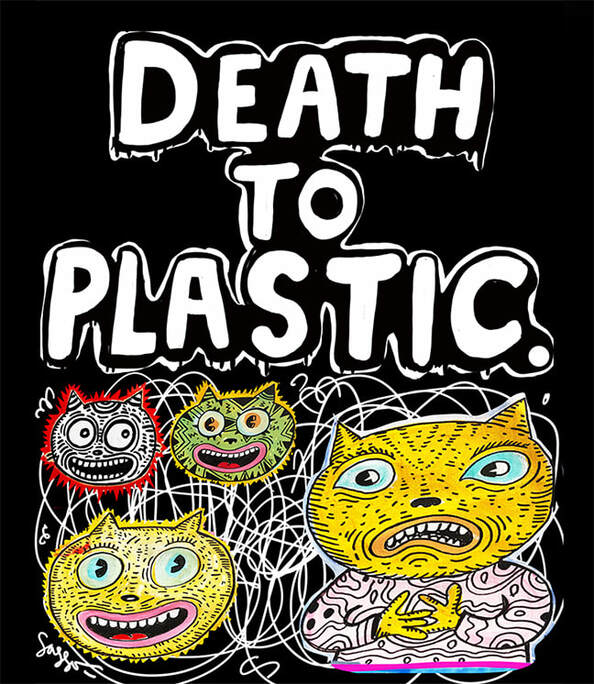
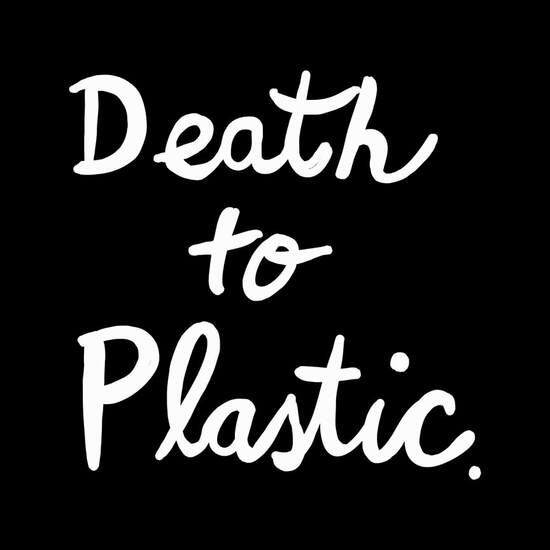
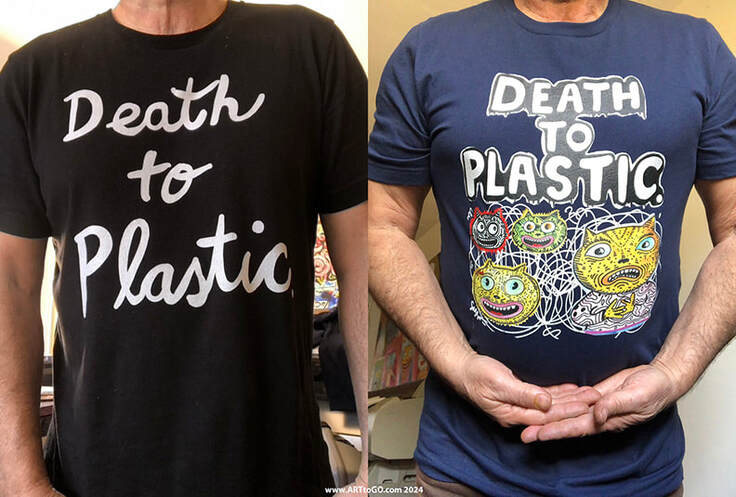
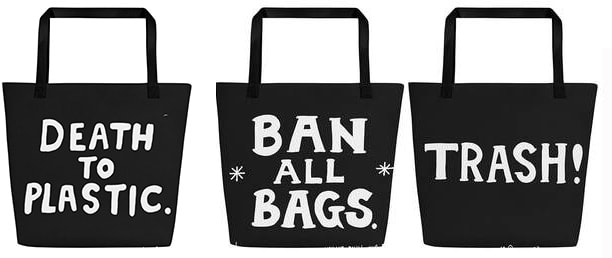
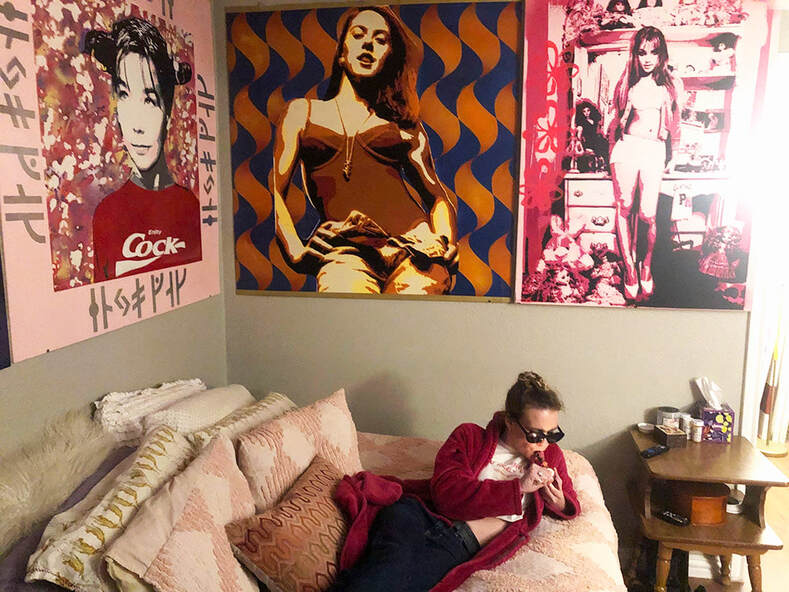
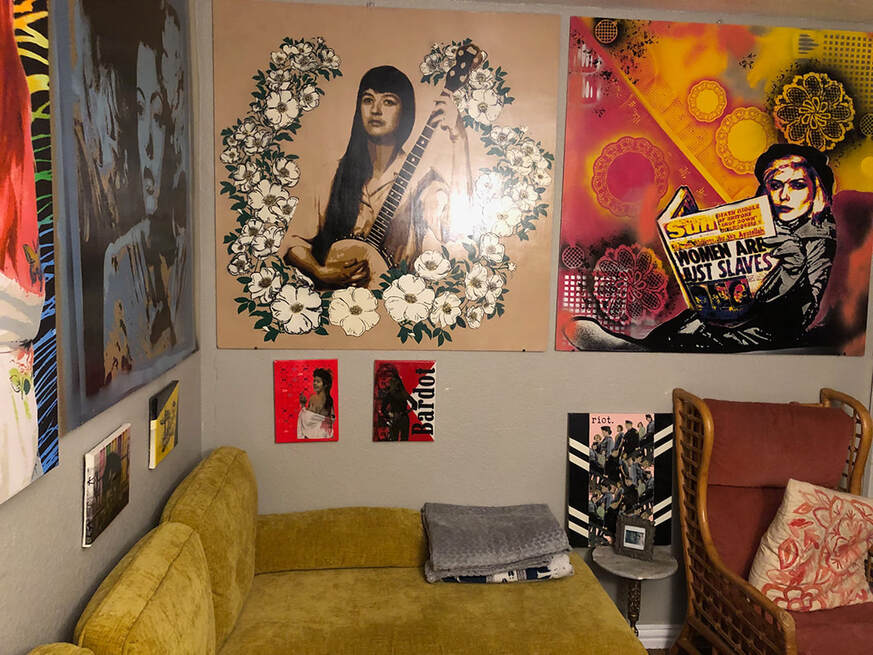


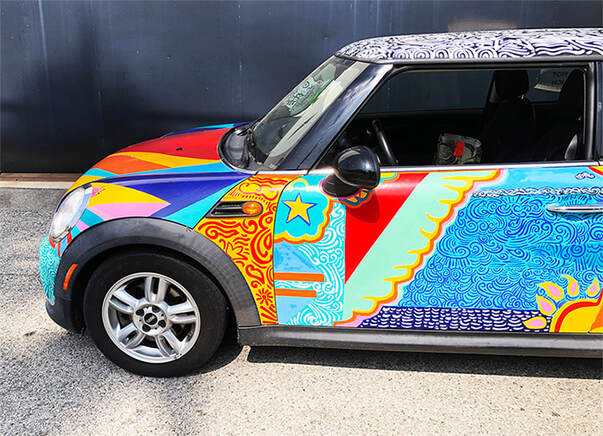
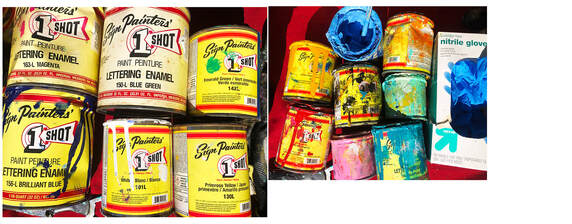
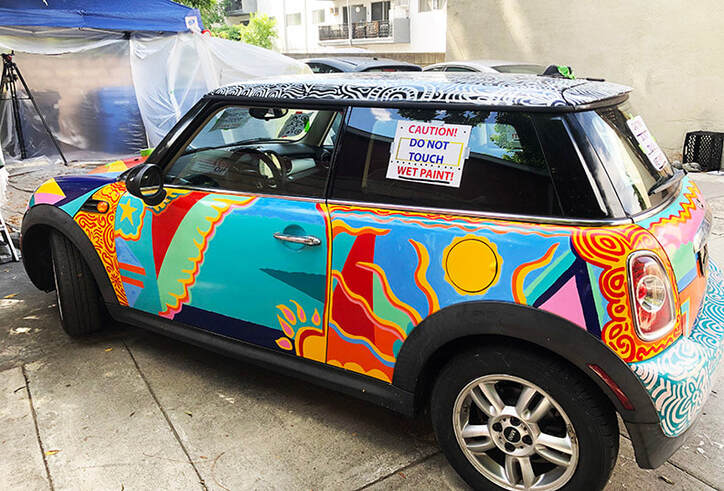
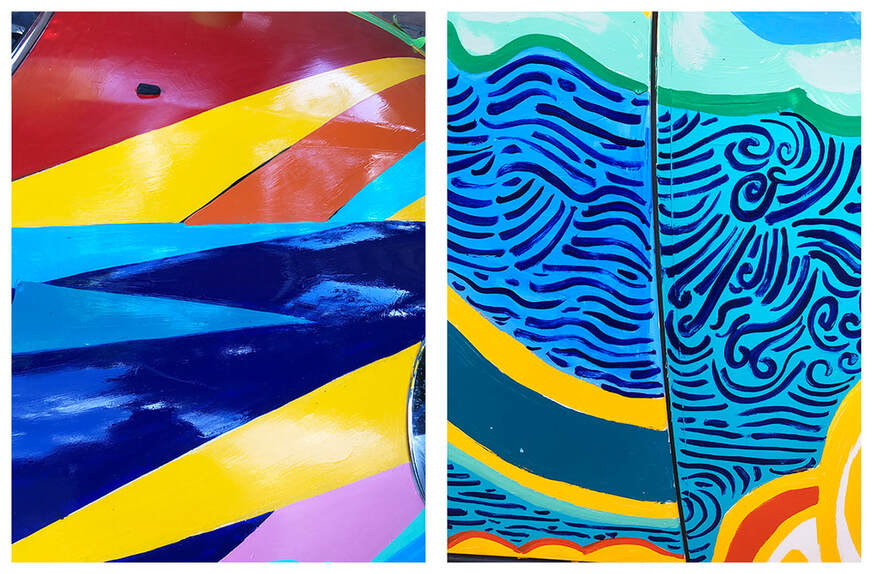
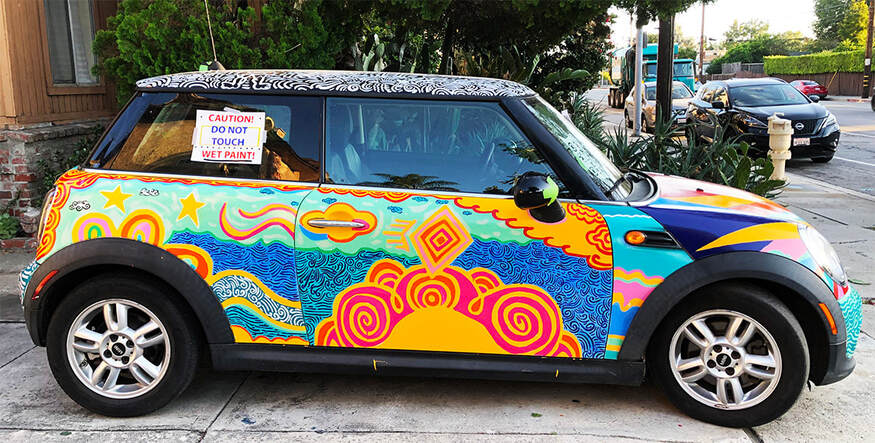
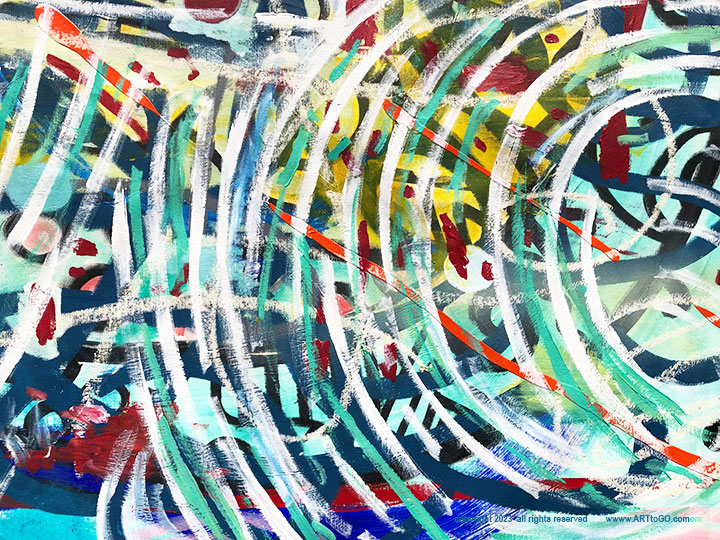
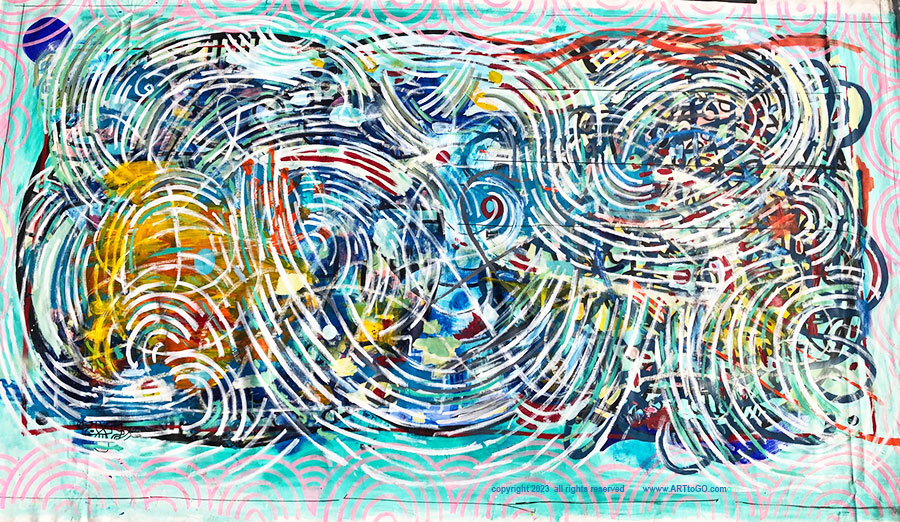
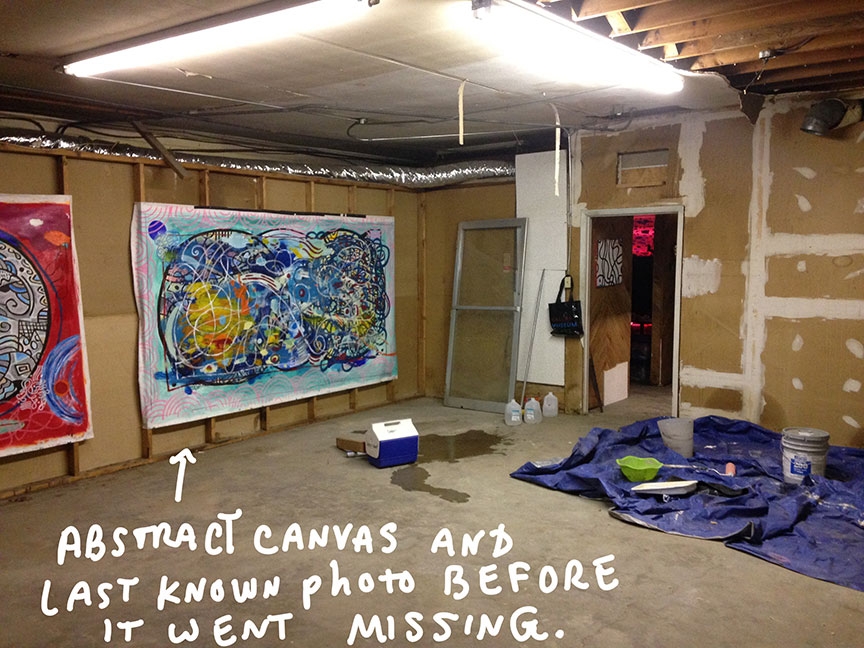
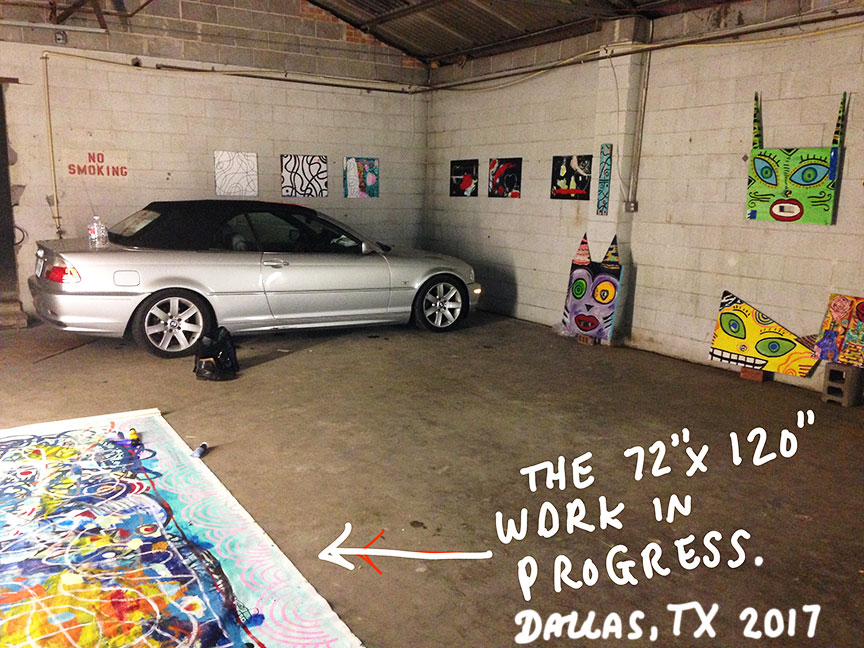
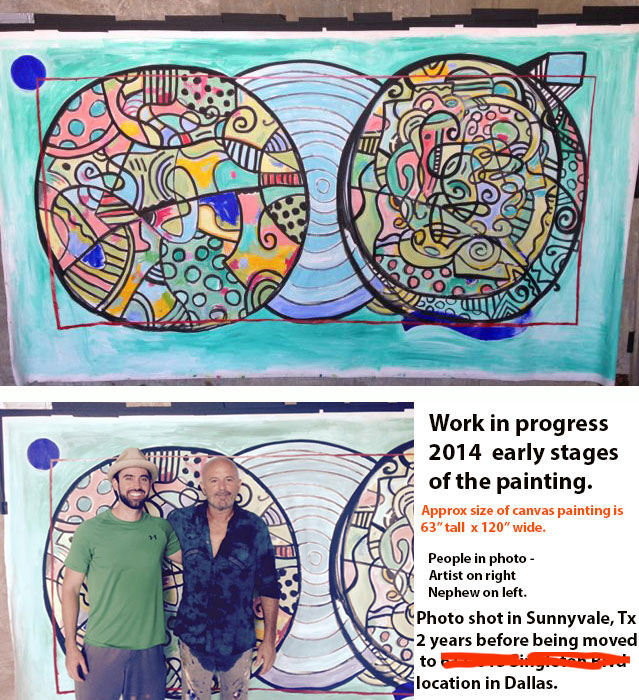
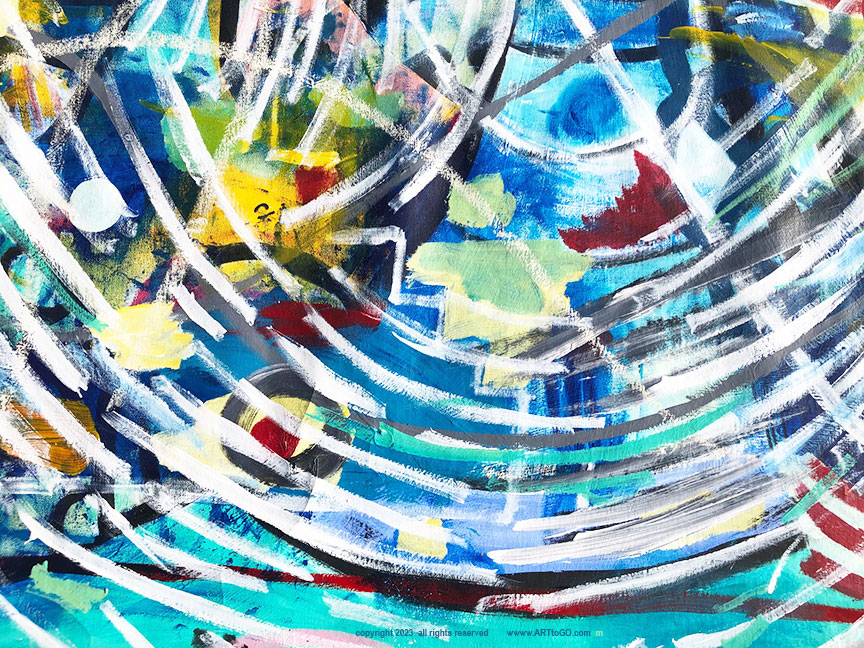
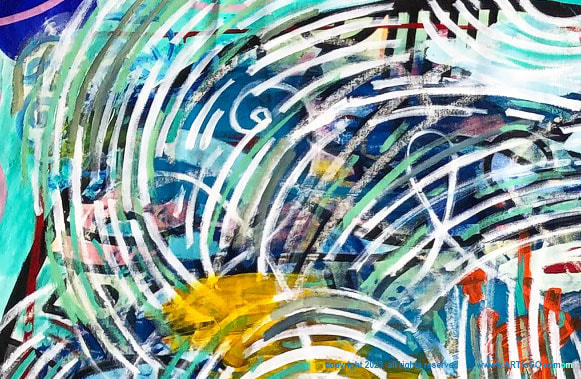
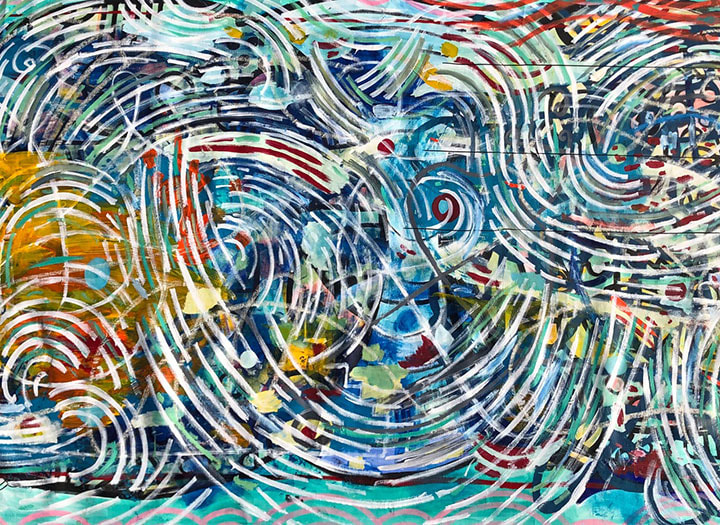
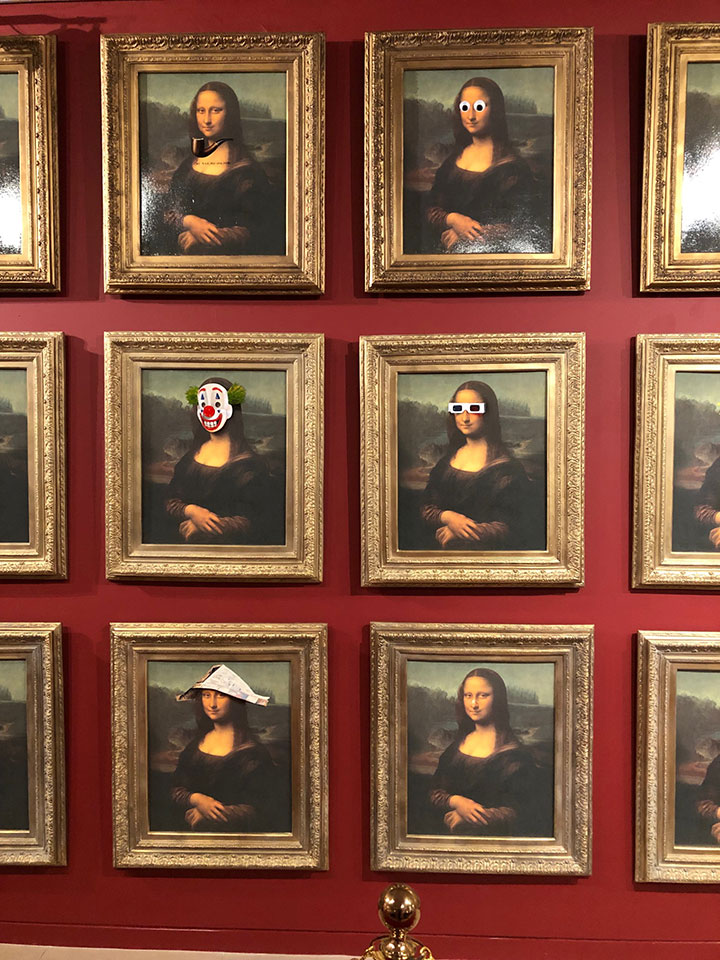
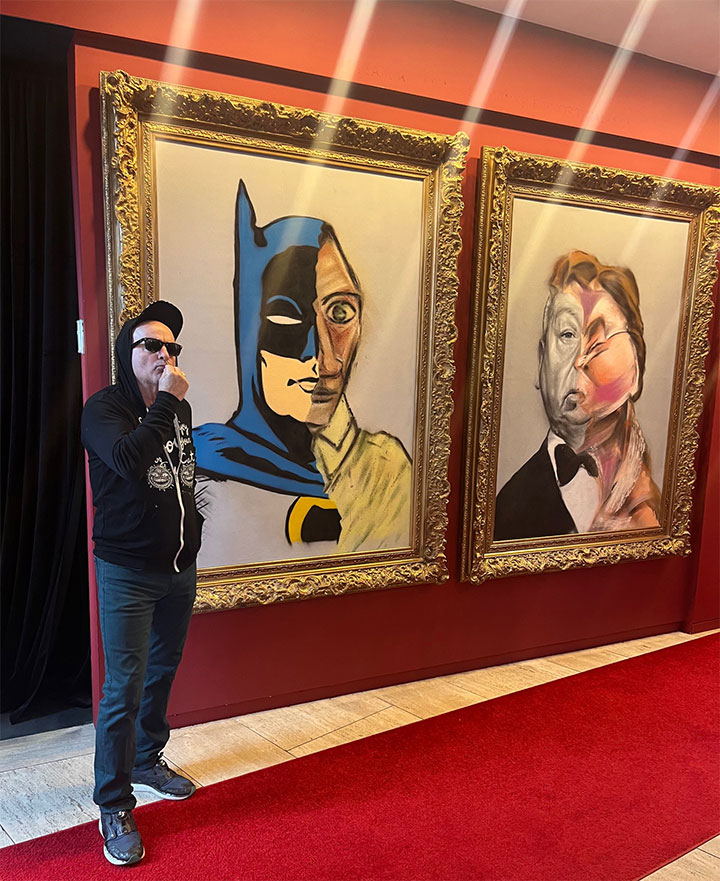
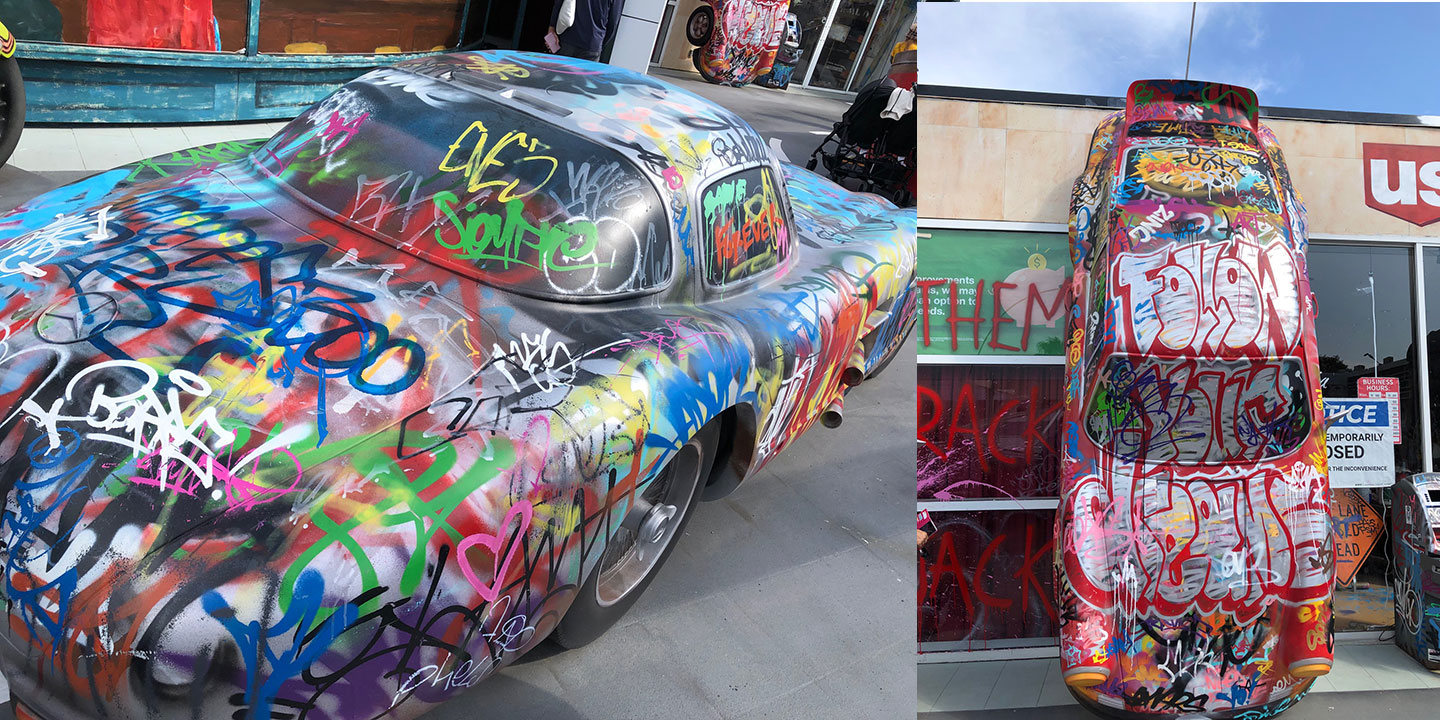
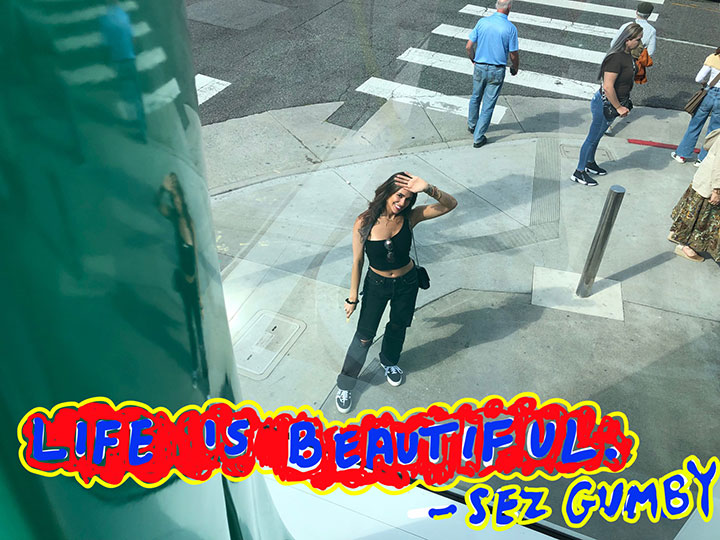
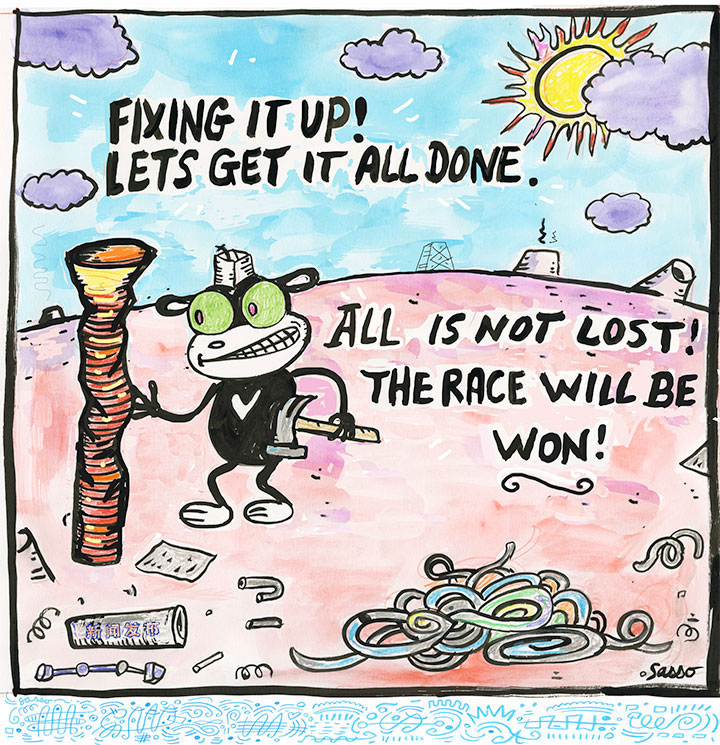
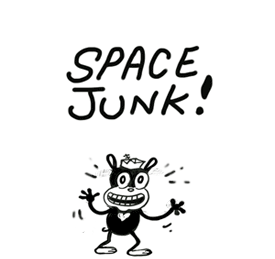
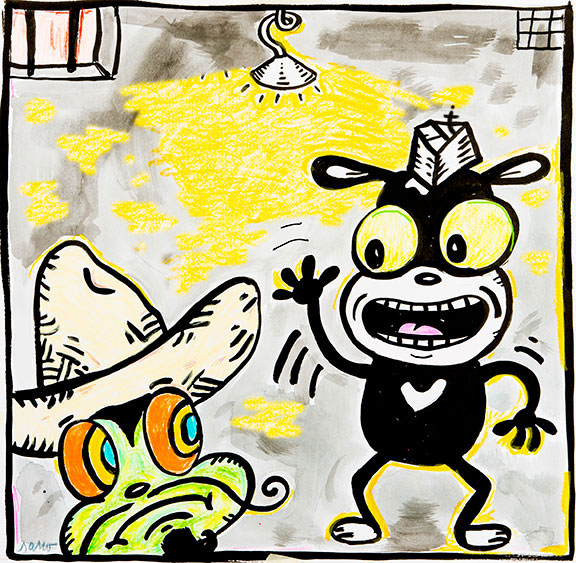
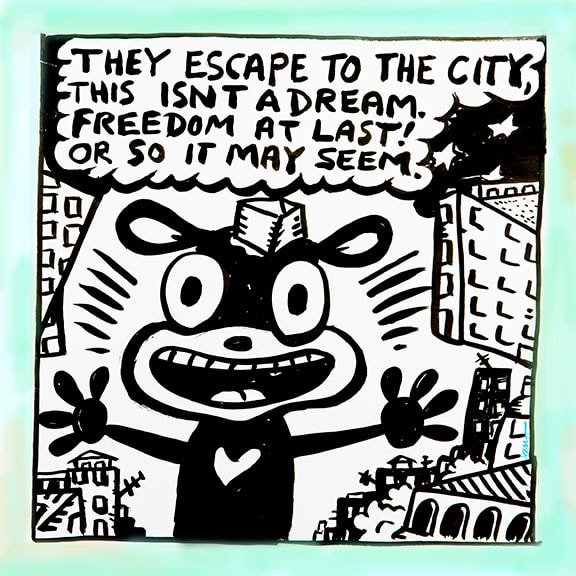
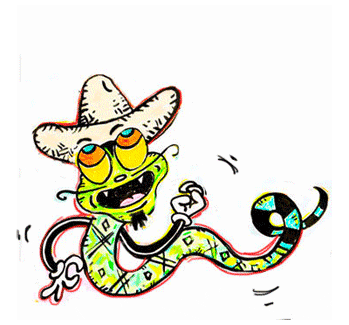
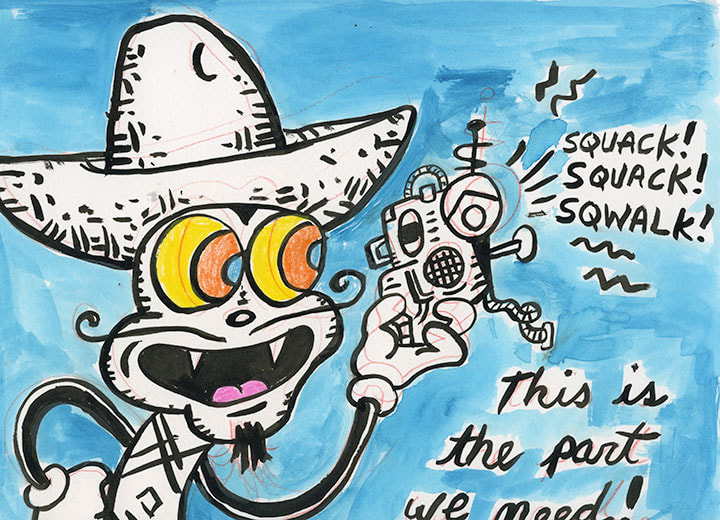
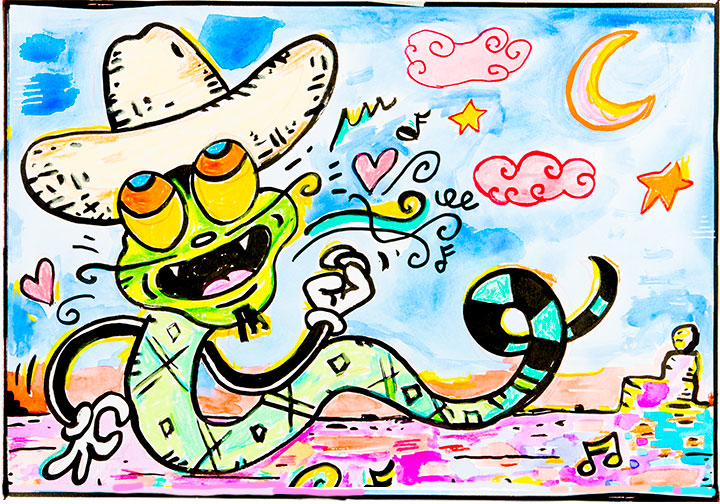
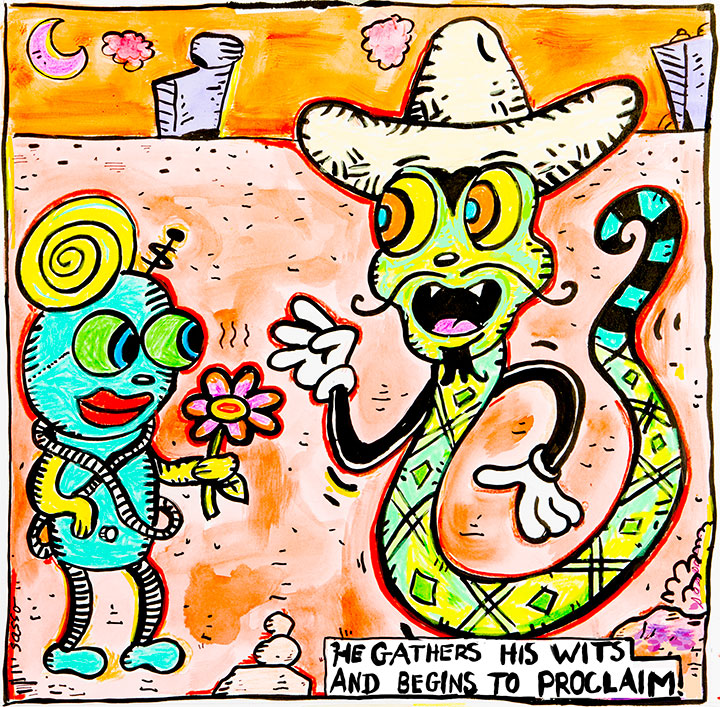
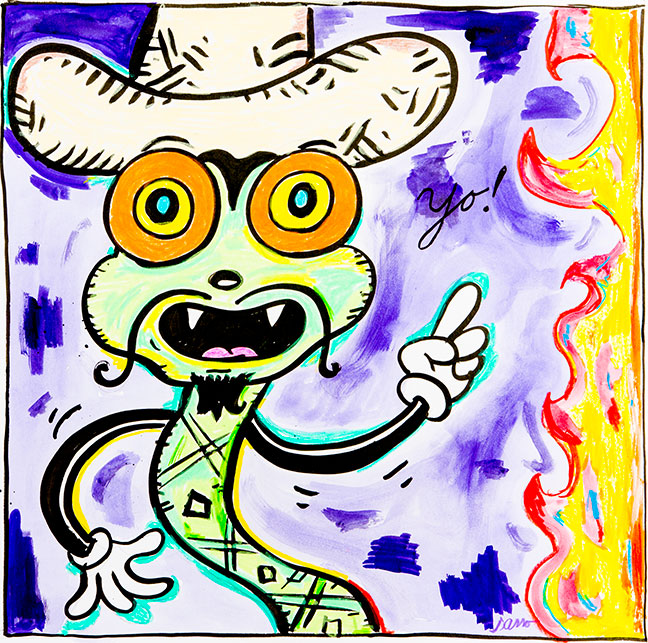
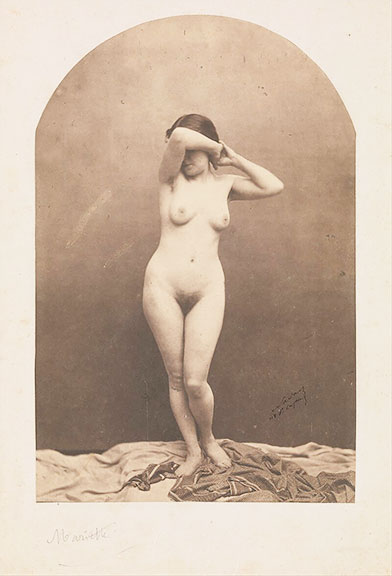
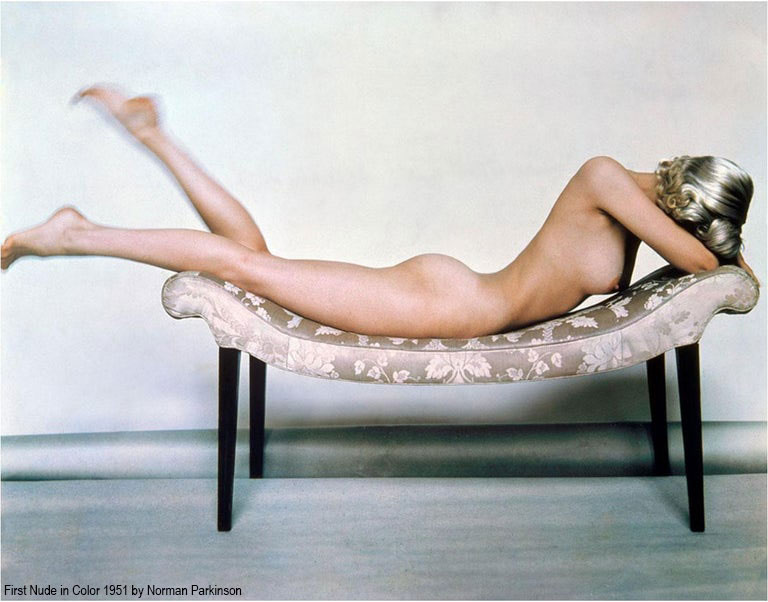
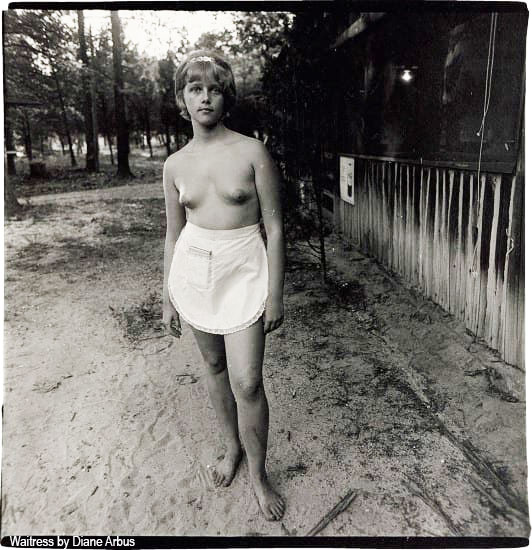
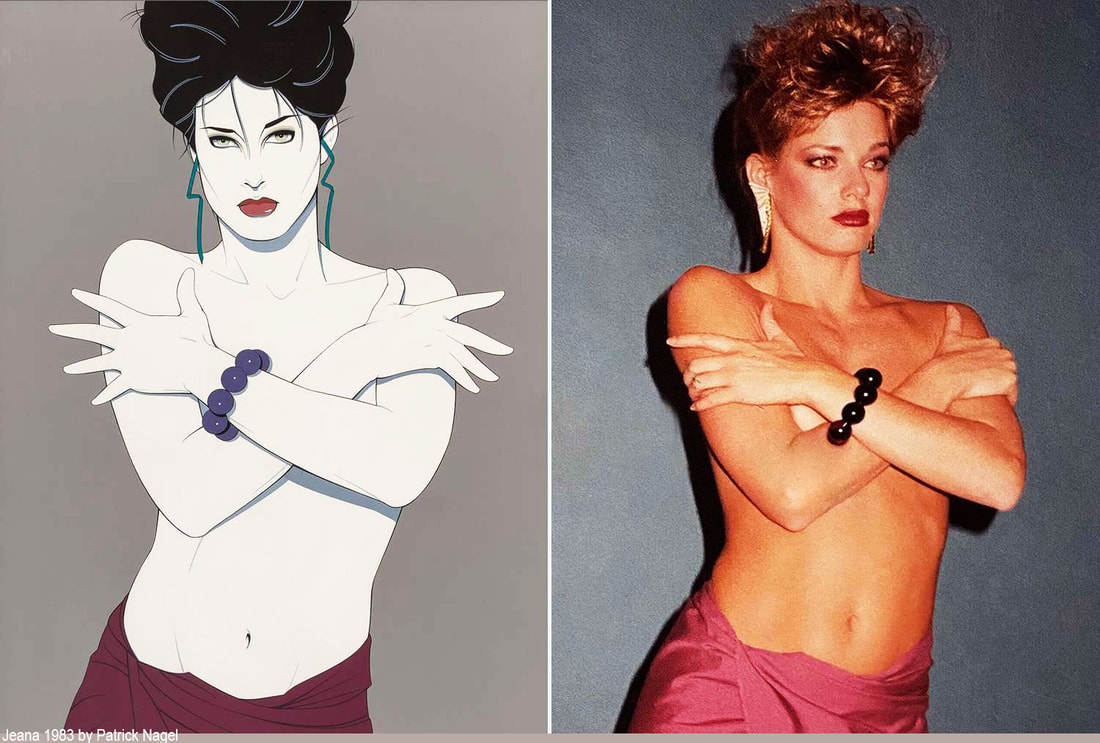
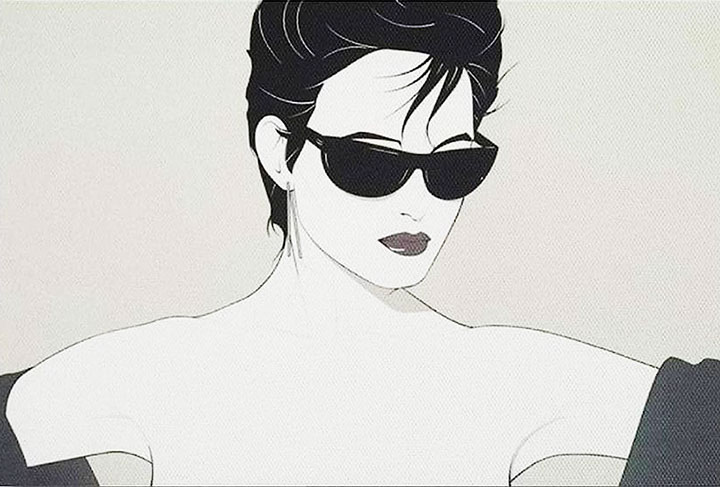

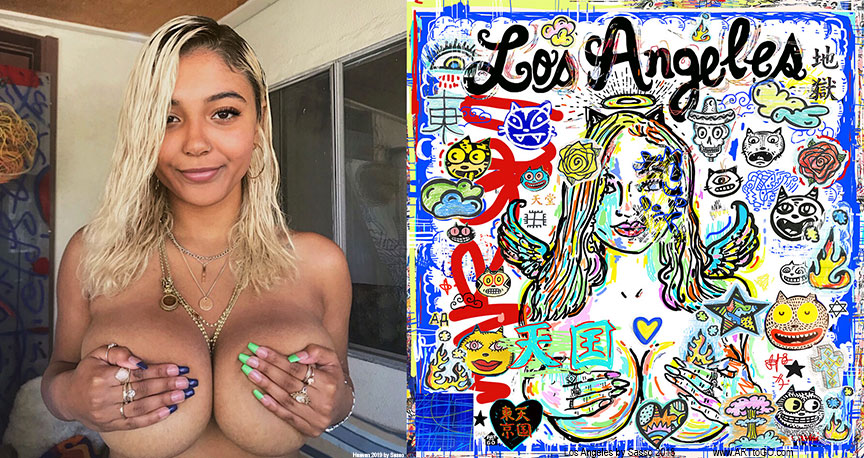
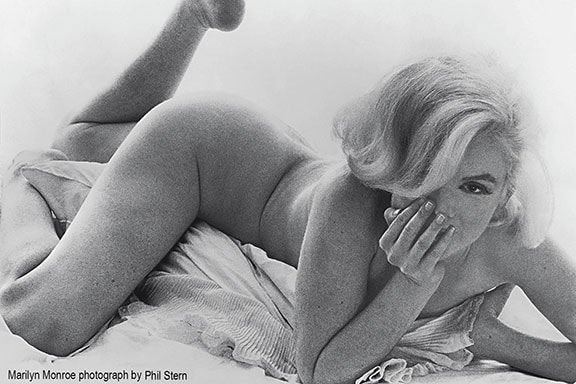
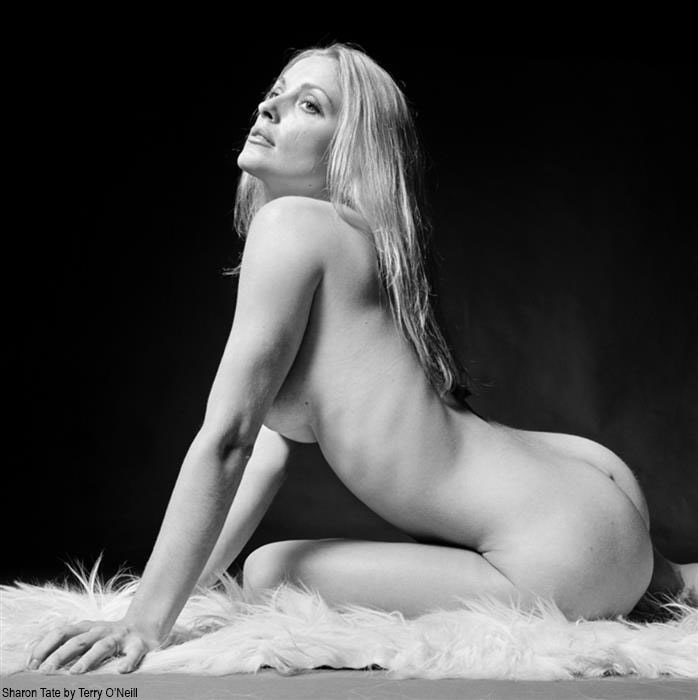
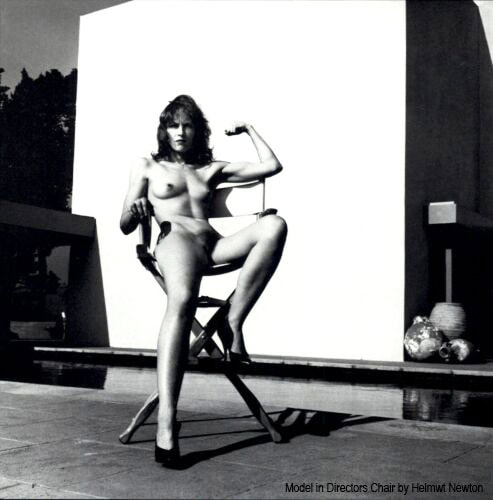
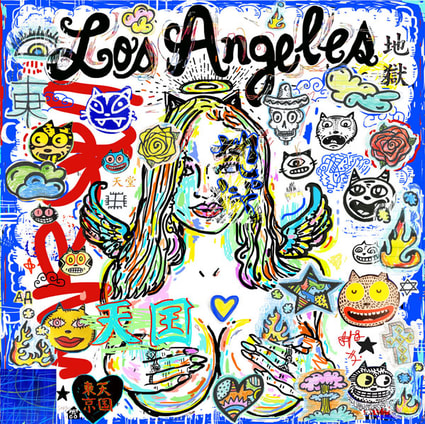
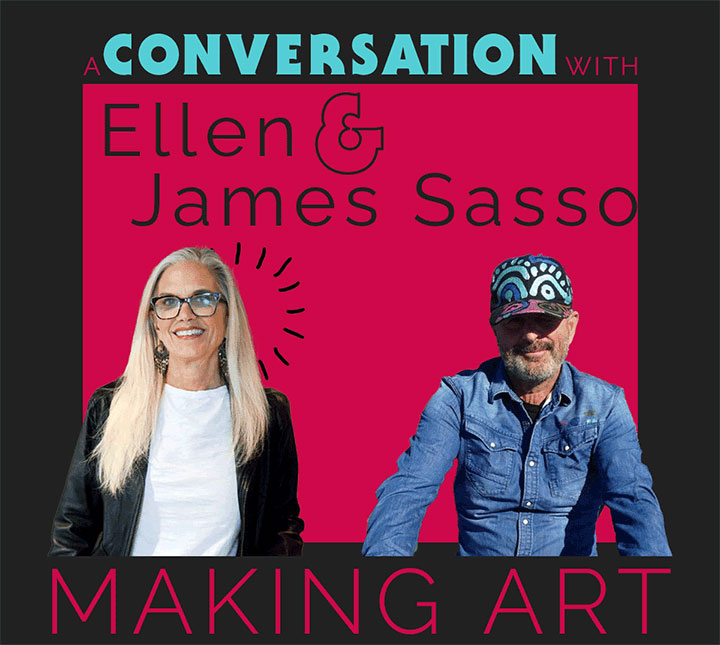
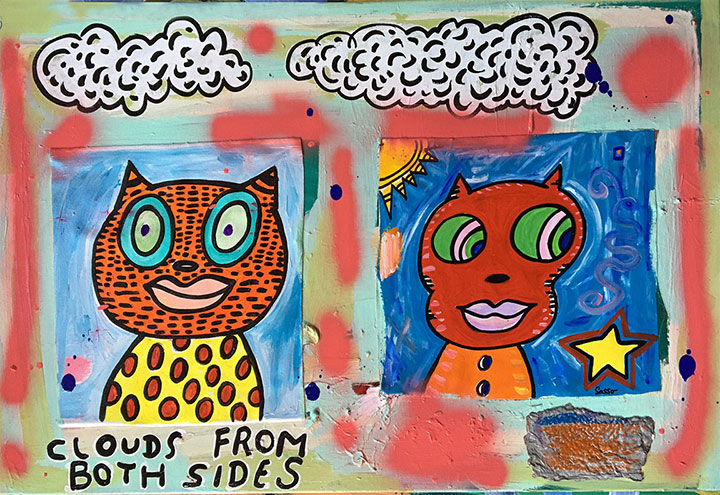
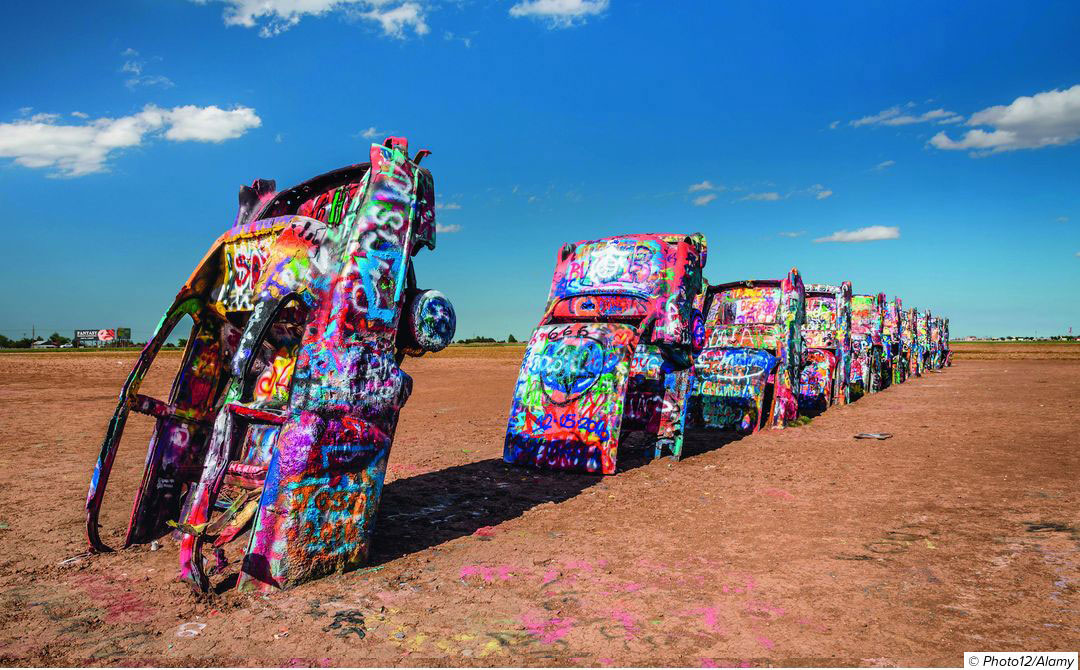
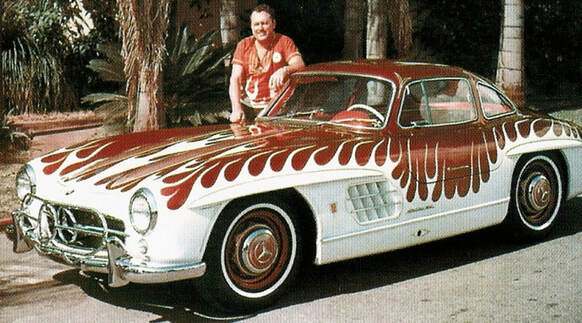
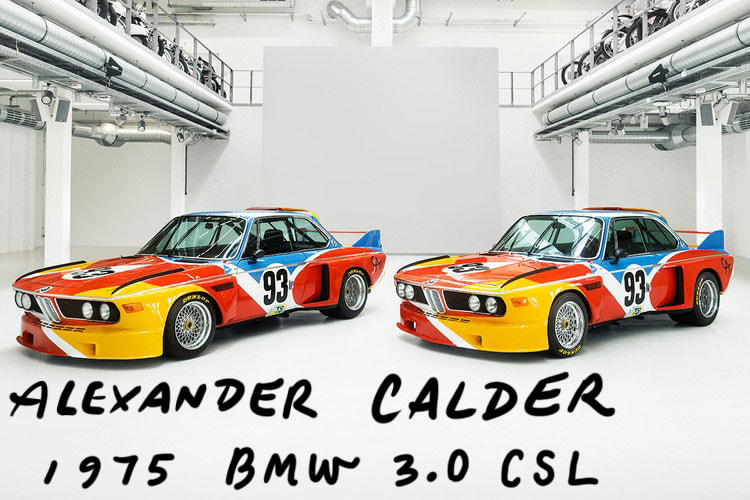
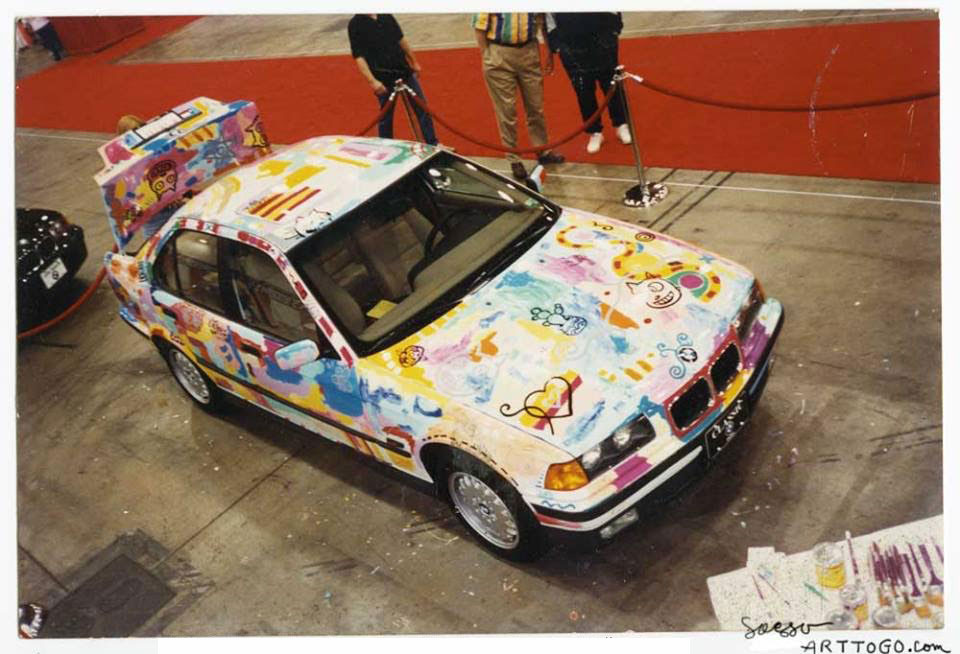
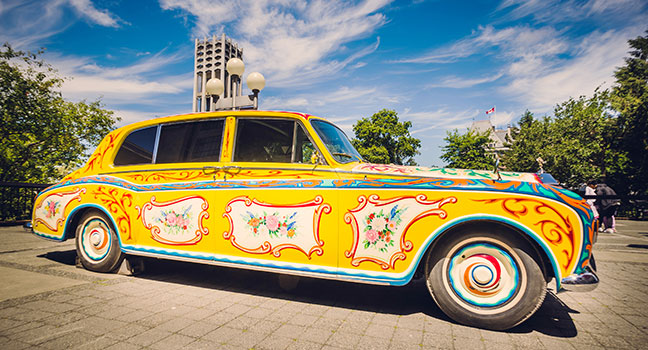
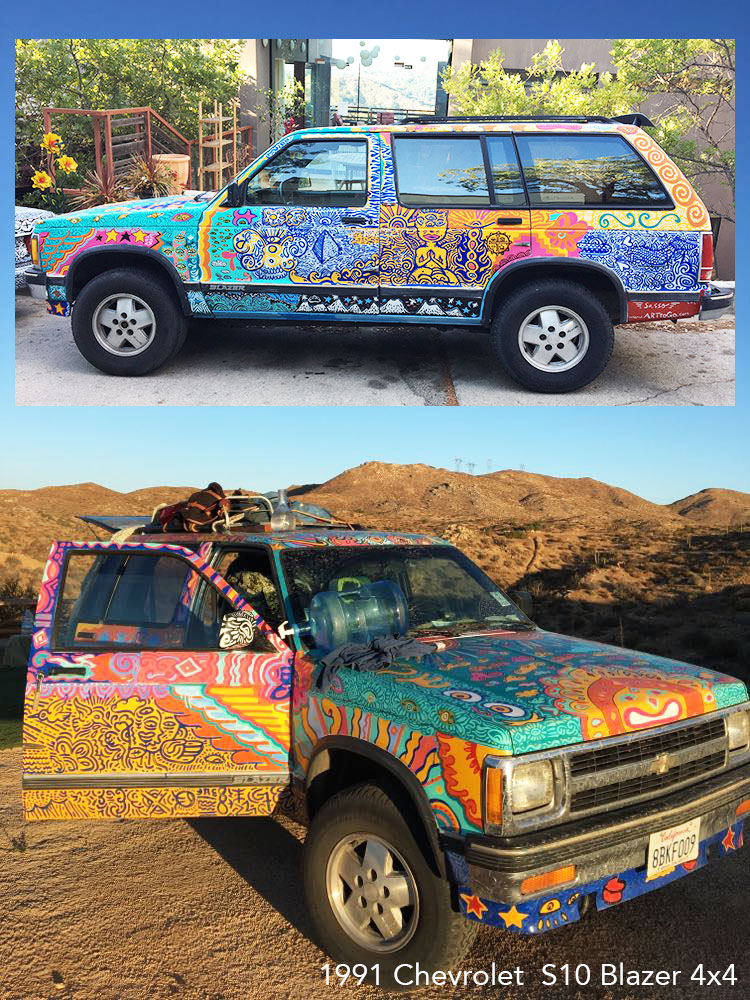
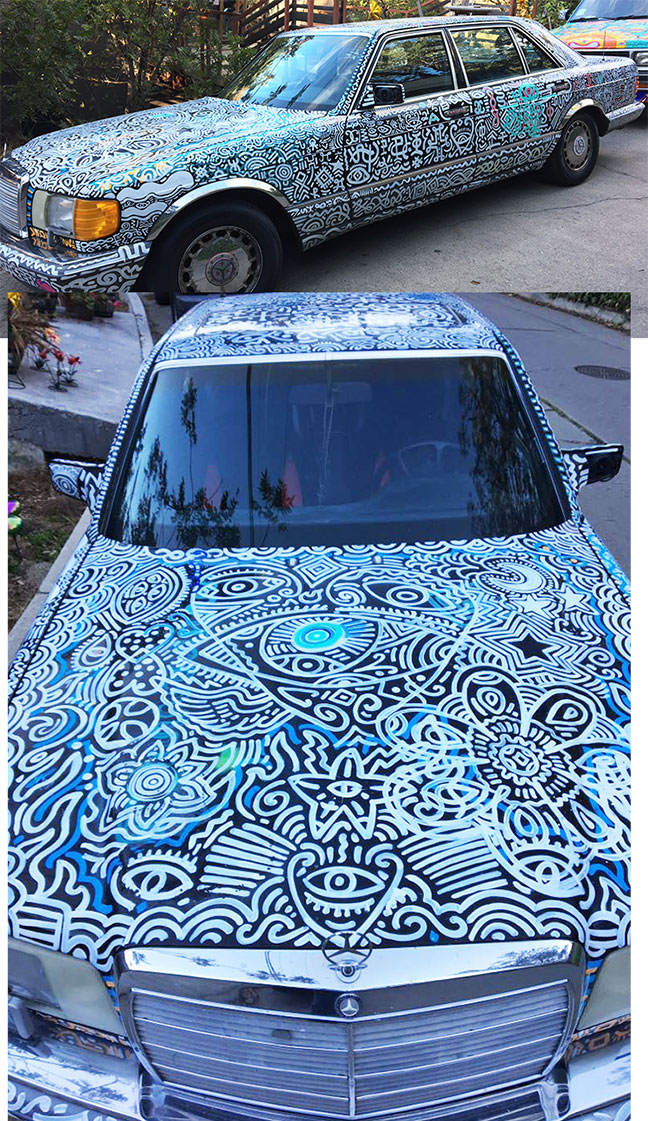
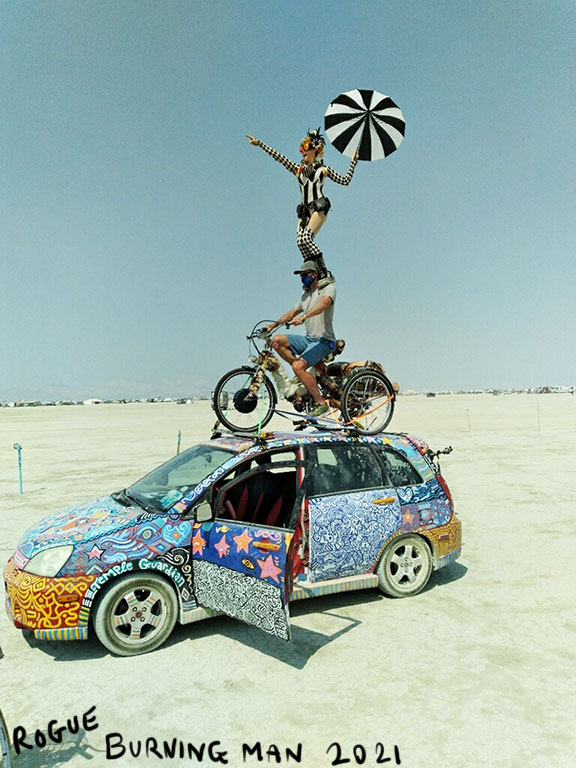

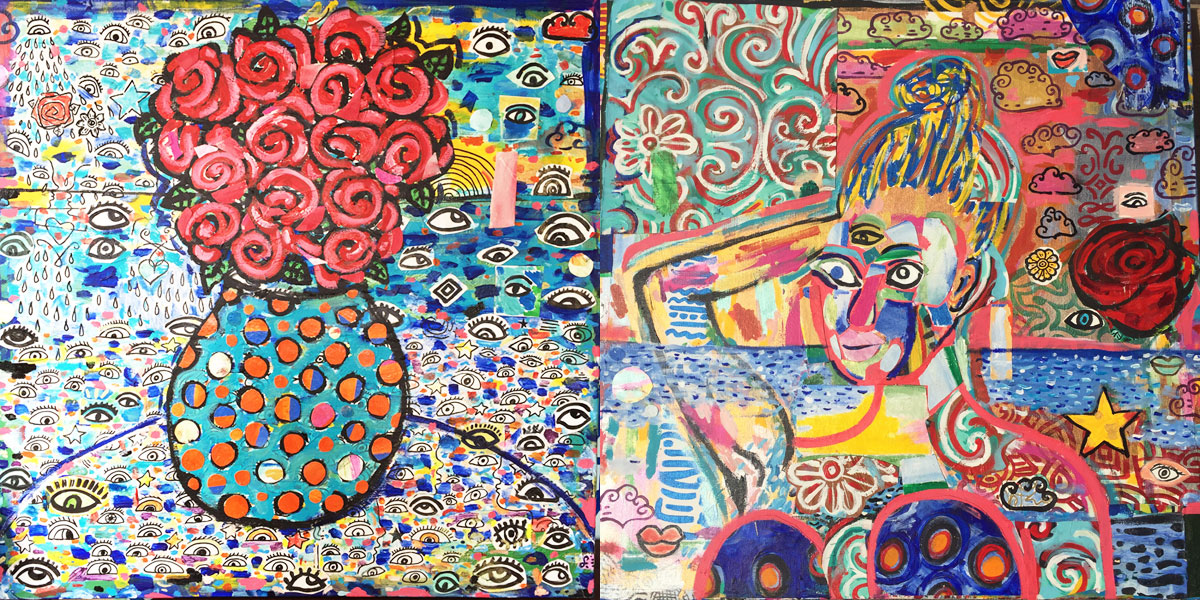
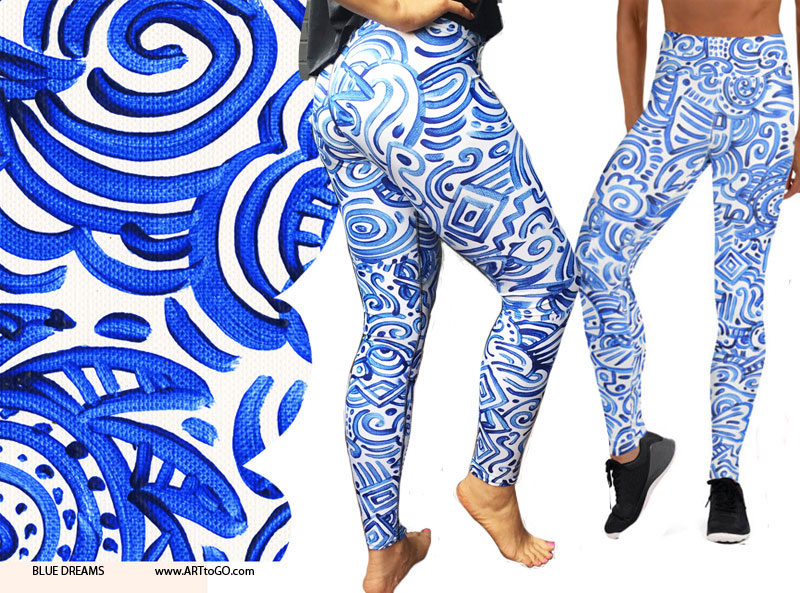
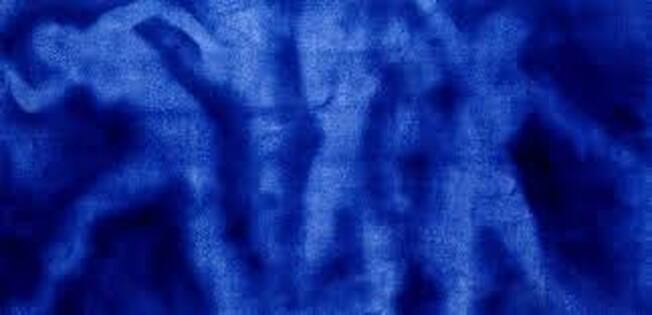
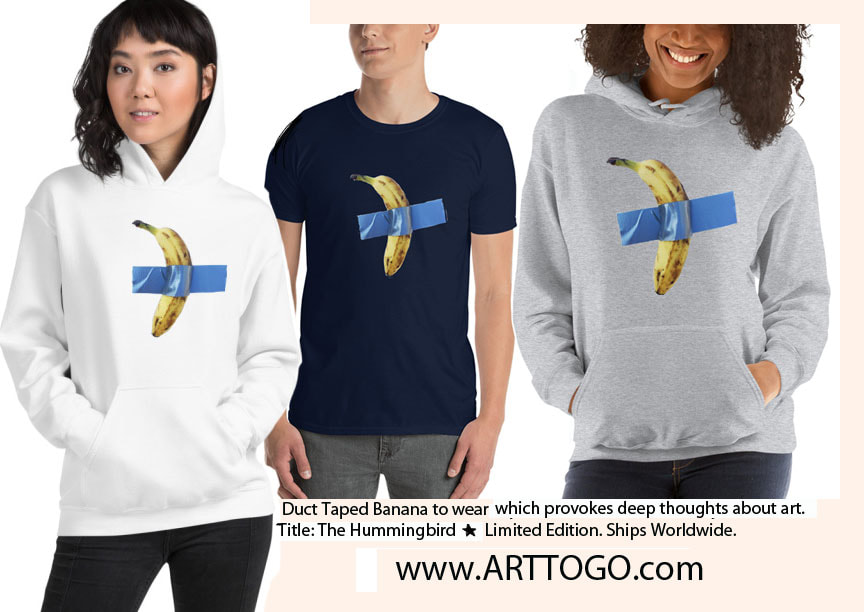
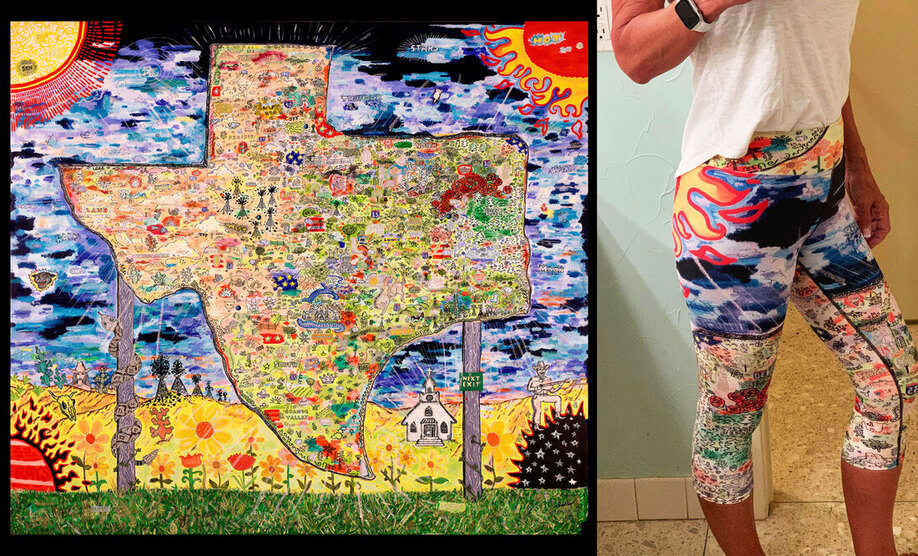
 RSS Feed
RSS Feed